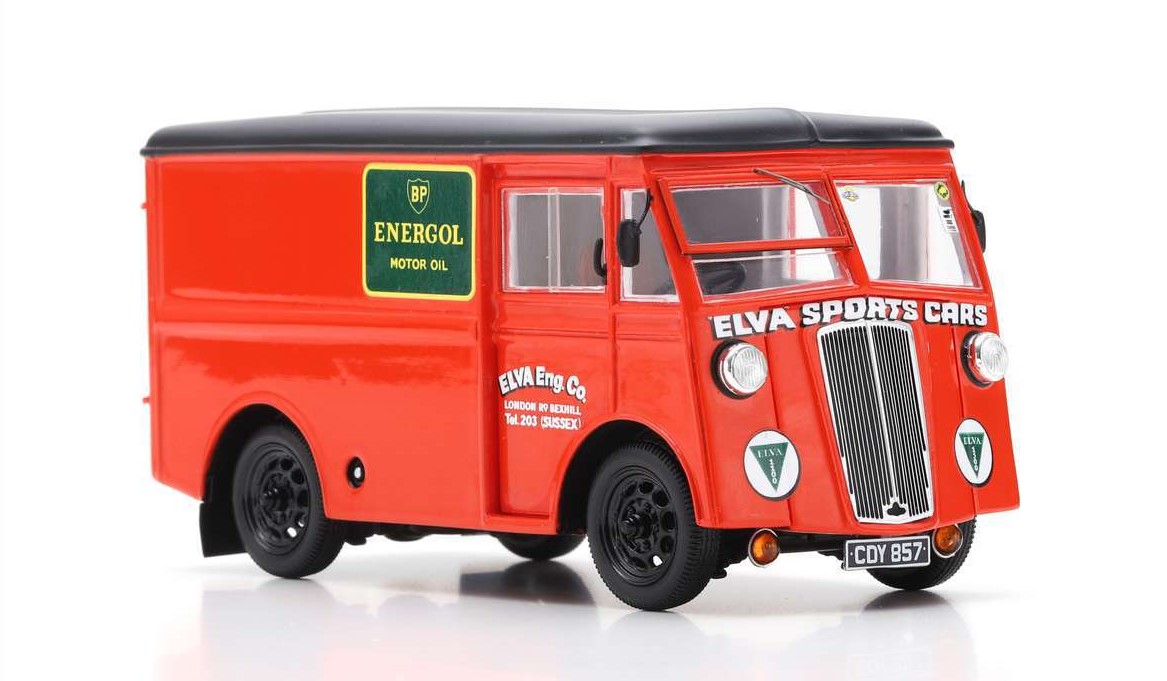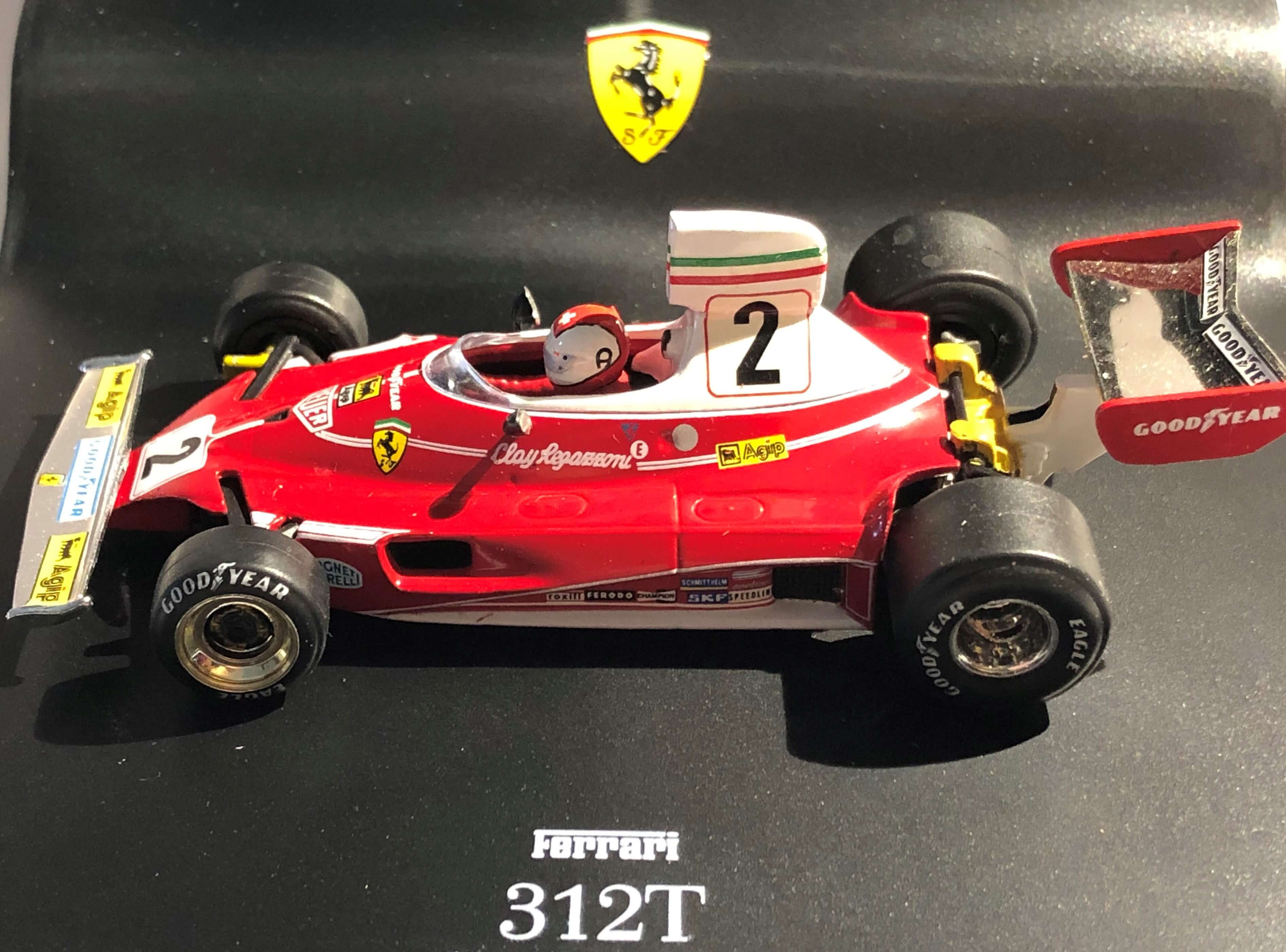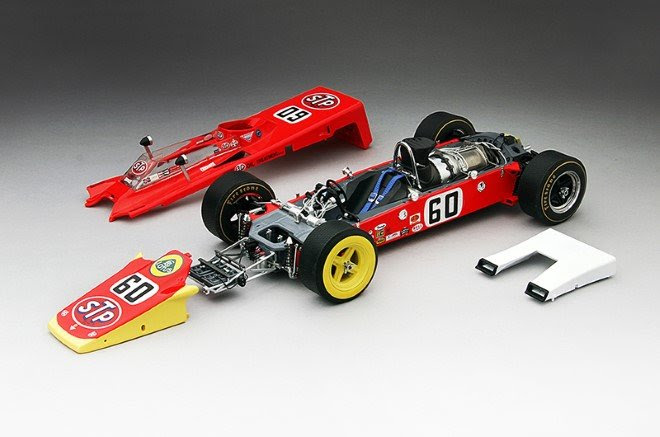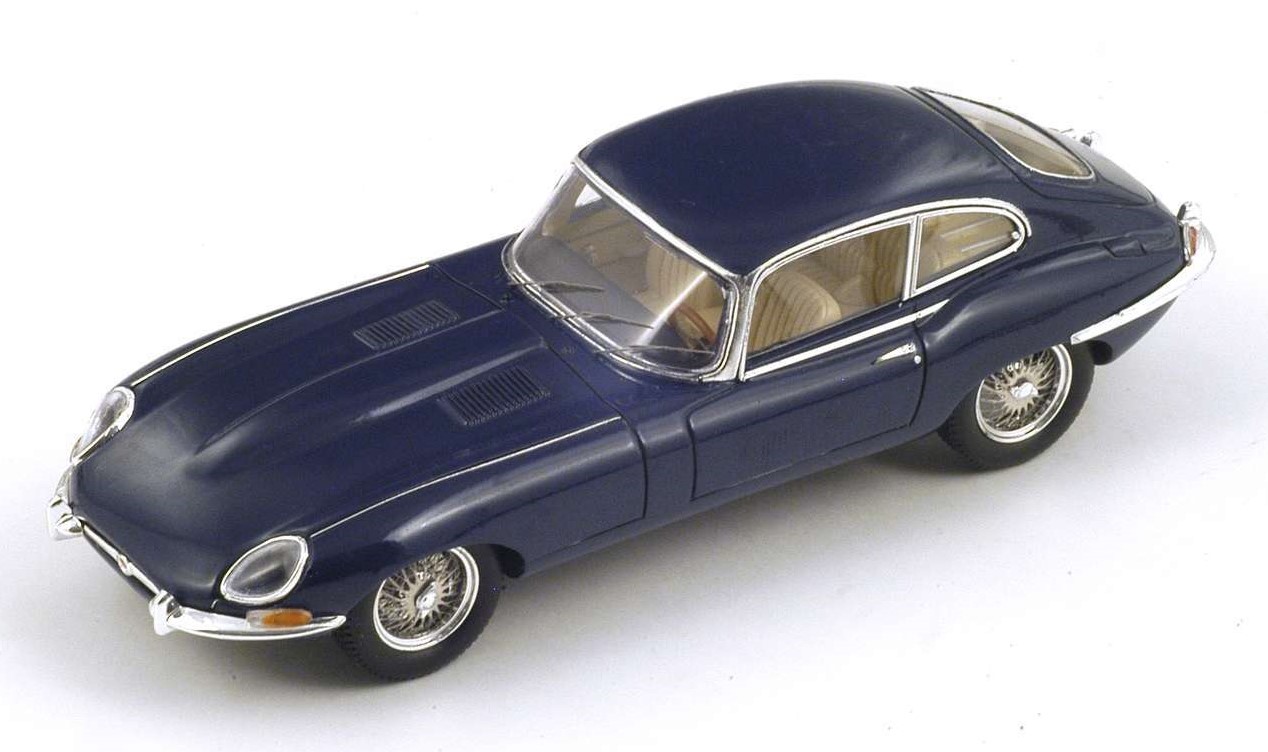www.F1scalemodels.com
... specialising in 1:43 scale model cars (Formula 1, Indy 500, Le Mans, GT and classic and modern road cars)
New Additions: December 2021
Hi everyone, welcome the December update. The daily COVID infections in NSW is around 150 - 200 and we are at 92.4% double-vaccinated so restrictions for the un-vaxxed will be lifted on 15 December ... just in time for Omicron. Will 2022 be the year of Omicron? We already have four cases in Sydney. Looking on the bright side, the Granville model fair may restart in February according to a source within the club but of course, the final decision will rest with the school authorities to allow the public back into their hall. There were rumours floating around that the Collectormania Fair is dead but Lyndsey Evans, the organiser posted on Facebook in early November that this is not the case and he is putting together some dates for next year. We could be seeing a full calendar of events next year. OK, I finally got a couple of parcels this month, one of them took a couple of months to arrive; here are some highlights ...
In 1939, the Morris company launched the PV (Parcel Van) type van which was powered by a 2055 cc 15.9 HP 4-cylinder engine . Production was halted with the onset of war and resumed in 1946 until 1953 with 15,300 being built. This version by Spark shows the van used by Elva to support their sports car racing program and the two drivers named at the rear of the van (Archie Scott Brown and Robbie Mackenzie-Low) suggests the van was used in 1956.
The Ford Mustang is undoubtably an iconic car with a proud history and also a very popular subject for model car collectors. There are many models on the market to choose from and this one from Diecast Masters makes the choice even more difficult. Diecast Masters was founded about 30 years ago when an Australian entrepreneur formed a business relationship with a Hong Kong diecast manufacturer to produce diecast scale models. The company is better known for its extensive range of CAT construction vehicles but they have branched out to produce the 2019 Mustang in 1:18 in various colours and in LHD/RHD configurations. The packaging mimics a shipping container and inside there is a garage backdrop provided to display your model. Apart from the opening bonnet, boot and doors, the model features detachable parts; the front and rear bumpers and both side panels are fully removable. In addition, the suspension and wheel camber are also adjustable, providing a lot of "finger fun". Rather than trying to describe it all, here's a link to a video produced by Diecast Masters.
 Diecast Masters: 2019 Mustang (LHD) Kona Blue
Diecast Masters: 2019 Mustang (LHD) Kona Blue
OK, that's it for another month and another year! I wish everyone a safe and happy festive season and I hope you can all get together with family and friends. If I can help with your collection, please drop me an email. Unfortunately, no model fairs until February/March next year. Finally, thank you to everyone who has supported me throughout the year; it's been a tough one but 2022 will be much better. All the best and happy collecting.
Formula One / Race Transporter
- 1994 Benetton Ford B194, J.Herbert (6) Australian GP "Bitburger" (Spark)
- 1966 Brabham Climax BT22, D.Hulme (8) Monaco GP (Spark)
- 1980 Ensign Ford N180, G.Lees (41) Dutch GP (Spark)
- 1965 Ferrari 158, J.Surtees (1) Belgian GP (Looksmart)
- 1965 Ferrari 1512, L.Bandini (2) Belgian GP (Looksmart)
- 2020 Ferrari SF1000, C.Leclerc (16) 2nd Austrian GP (Looksmart)
- 2020 Ferrari SF1000, S.Vettel (5) Austrian GP (Looksmart)
- 1965 Gordini T32, A.Milhoux (11) German GP (Spark)
- 1963 Lola Climax Mk4, M.Trintignant (17) Monaco GP (Spark)
- 1962 Lotus 21, J.Clark (31) de Cote d'Ollon-Villars (Hillclimb) (Spark)
- 1937 Mercedes W125, R.Caracciola (12) 1st German GP (Minichamps)
- 1955 Mercedes W196 R Stomlinie, J.M.Fangio (18) 1st Monza GP (IXO)
- 1958 Vanwall VW5, S.Lewis-Evans (6) 3rd Belgian GP (Spark)
Le Mans / Sports cars /Race Transporters
- 1946 Delage D6 Grand Prix, Mullin Auto Car Collection (46) Blue (Minichamps)
- 2017 Mercedes AMG GT3, Race version in white (IXO)
- 1975 MAN 19.320, Race Transporter - Rothmans-Porsche (IXO)
- 1947 Morris PV, Elva Engineering Race Support Truck (c. 1956) (Spark)
Road Cars
- 1977 Maillet Eric 3, Camper Van in dark turquoise/white (IXO)
1:18 Models
- 1975 Hesketh Ford 308, A.Jones (26) Monaco GP (Spark)
- 2019 Ford Mustang GT in Kona Blue (Diecast Masters)
After Thoughts: "A 60-year retrospective - The 1961 F1 World Championship." At this time last year I was able to offer my congratulations to Lewis Hamilton for retaining the World Championship title but this year, the championship is still far from being decided. With 22 races this year, the final race will be run mid-December; by contrast, the 1961 World Championship was contested over just eight races(1),(2) over a 6-month season. Whereas the current championship travelled around the world, in 1961, 7 of the 8 races were held in Europe with a single race in America.
The 1961 season had a brand new look; gone were the 2.5 litre engines, replaced by 1.5 litre normally aspirated power plants. Points for a race win increased from 8 to 9 points and the Indy 500 race, which never affected the outcome of the championship, was finally dropped from the series. The main protagonists were Ferrari with their well-prepared "shark nose" 156 for Phil Hill, Richie Ginther and Wolfgang von Trips, Porsche with their 787 for Gurney and Bonnier, the Lotus of Moss, Ireland and Clark, the Coopers of Surtees, Brabram and McLaren and the BRM Climax driven by Graham Hill and Tony Brooks.
 Spark: Cooper Climax T53 1961 J.Surtees
Spark: Cooper Climax T53 1961 J.Surtees
Despite Enzo Ferrari's well-known dislike of mid-engined cars (he believed these cars were built by people who did not have enough horsepower), the team introduced their new mid-engined car powered by a 1.5 litre V6 engine. The Ferrari Dino V6 engine proved to be more than a match for the British 4-cylinder units. At the first race of the season at Monaco, the Ferrari 156's were upstaged by Moss in his Walker Racing Lotus-Climax 18 with its side panels removed to cool the driver. There was another suggestion that Moss wanted to lighten his car to make it more competitive, whatever the true reason, Moss was able to put his more nimble Lotus on pole-position, score the fastest lap and win by 3.6 seconds from Ginther's Ferrari with Phil Hill third.
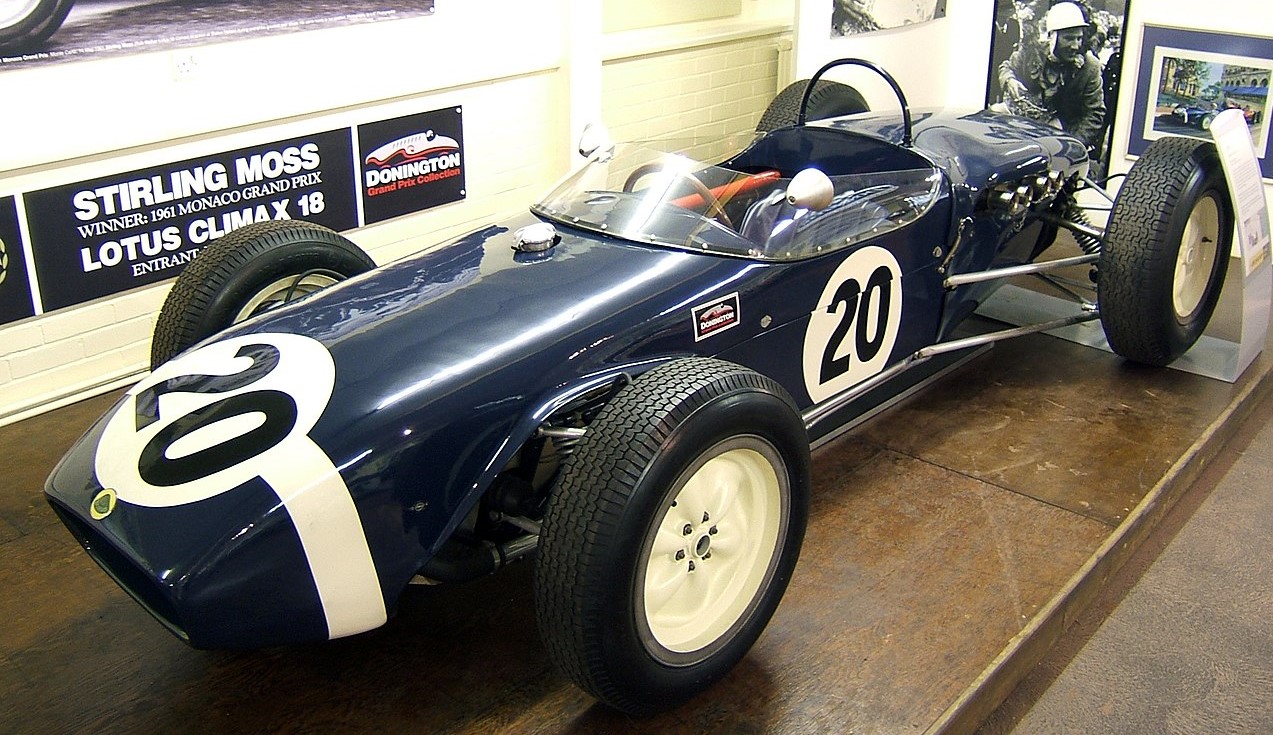 Lotus 18, Moss 1st Monaco GP 1961 (Photo: Pyrope)
Lotus 18, Moss 1st Monaco GP 1961 (Photo: Pyrope)
Following Monaco were the Dutch, Belgian, French and British Grand Prix and Ferrari were victorious at all four races. Wolfgang von Trips won two, Phil Hill and Giancarlo Baghetti(3) (in a customer Ferrari 156) with one win each. After the British GP, the championship standings were von Trips on 27 points, Hill on 25 points and Ginther on 16. Then came the German GP where Hill claimed pole on the 22.81 km Nurburgring Nordschleife circuit with a sub-9 minute lap, the first driver to do so. In the race, Moss in his superior handling Lotus passed Hill before the second lap and would stay ahead for the rest of the race with von Trips in second, then Hill in third. The standings after the race had von Trips, the dashing German count, with 33 points, Hill with 29 and Moss with 21 points. In 1961 Scuderia Ferrari had no established number 1 driver, Enzo Ferrari felt it was beneficial to have his drivers battle it out all season. So the intensity between von Trips and Hill became more heated as the season wore on.
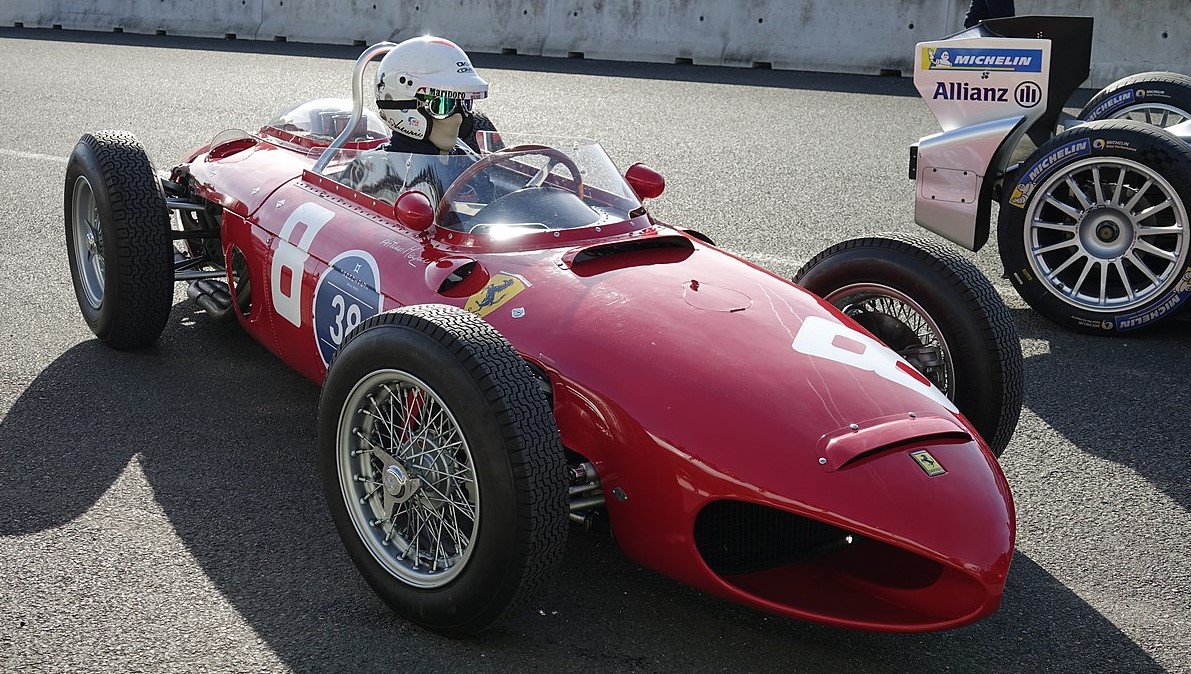 Replica Ferrari 156 in 2018 (Photo: Y.Leclercq) Ferrari factory policy saw all existing shark nose 156s scrapped by the end of the 1963 season.
Replica Ferrari 156 in 2018 (Photo: Y.Leclercq) Ferrari factory policy saw all existing shark nose 156s scrapped by the end of the 1963 season.
The penultimate race of 1961 was at Monza. Phil Hill, the quiet American from Santa Monica, California was feeling the pressure and he desperately needed to win to stay in contention. His cause was not helped when von Trips claimed pole on the Monza circuit which used the daunting, high-speed banking for the last time. Hill always had a high level of sensitivity to his cars and when von Trips was a second quicker, he realised he was losing that one second on the section that was flat out. He quickly summised he was down on power so Hill pleaded with the team and with Enzo Ferrari to change his engine. Enzo Ferrari, who never attends any races but was at Monza just for Friday practice, suggested that Hill's foot wasn't as heavy as it used to be. This infuriated Hill who was adamant the problem was the engine and not his bravery. Finally Carlo Chiti, the designer of the 156 relented, swapping out the engine the night before the race ... and finding one of the valve springs was broken. When the race started, Hill, with his fresh engine stormed from 4th on the grid to 1st on the first lap. By the end of lap 2, von Trips was dead. Approaching the Parabolica, Jim Clark and von Trips collided sending the Ferrari spearing through a spectator fence and was tossed into a violent roll into where spectators were standing. Von Trips was thrown from his car and died along with 14 spectators. The race was not stopped and Hill, who was unaware of his rival's death won a bittersweet victory and the World Championship.
The last race of the season was held on the only non-European circuit at Watkins Glen in upstate New York. Having already won the Drivers' World Championship and the International Cup for F1 Manufacturers, Ferrari decided not to cross the Atlantic and so the large crowd were denied the chance to watch their first American World Champion race at home. Jack Brabham raced with a new V8 Climax engine in his Cooper and claimed pole and the fastest race lap but Innes Ireland in his Lotus-Climax prevailed. It would be Ireland's only GP win but it was also the first win for Team Lotus. Tony Brooks in a BRM finished third to end his career on the podium.
The 1961 season was one of many firsts; first GP wins by Baghetti, von Trips and Ireland, first GP win for Team Lotus and first American to win the World Championship. The season however, was marred by the tragic death of Wolfgang von Trips (1928 - 1961).
 Von Trips, 1st Dutch GP 1961 (Photo: Harry Pot)
Von Trips, 1st Dutch GP 1961 (Photo: Harry Pot)
(1) There were an additional 23 non-championship F1 races in 1961!
(2) Only the best 5 results from the 8 races were counted.
(3) Giancarlo Baghetti won the French GP and it was also his first championship GP race. He joins Nino Farina and Johnnie Parsons as F1 race winners on debut. However, Farina won the very first GP in 1950 where all drivers were debutants and Parsons won the very first F1 Indy 500 race in 1950, again all drivers were debutants.
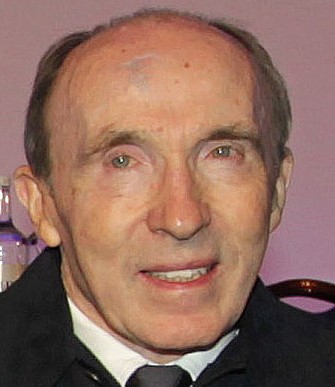 Vale: Sir Frank Williams (16 April 1942 - 28 November 2021)
Vale: Sir Frank Williams (16 April 1942 - 28 November 2021)
New Additions: November 2021
Hi everyone, welcome the November update; I can't believe we are only eight weeks away from Christmas. Some more positive news on the Covid front, here in NSW we are down to around 200 infections daily (from a high of 1523) and 87.5% fully vaccinated. Heaps of restrictions have been lifted so it's looking good for a return of model fairs next year. The fate of the monthly model fair at Granville is still unknown as it's held in a school hall so I don't expect it to restart any time soon, given the schools' primary focus is education and not model cars. Unfortunately, there's not many new additions for this month as a couple of parcels seem to be taking forever to reach Australia. However, it would be remiss of me not to highlight at least one car this month ...
Of all the endurance races held each year at Bathurst - the 6-hour, 12-hour and the 1000 - the 12-hour race for GT3 cars is my overwhelming favourite (sorry, Supercar fans). I think the reason is the variety of exotic cars on track such as McLarens, Nissans, Porsches, Bentleys, Audis, Ferraris, Aston Martins, Lamborghinis, Hondas, BMWs and Mercedes. Each marque has a chance of victory after 12 hours of racing up and down the mountain. After coming close on several occasions, the Bentley Continental GT3 from the British M-Sport team finally had a break-through win in 2020 which was a fitting end for the works team. At the end of the 2020 season, the luxury brand shut down its factory supported M-Sport run operation.
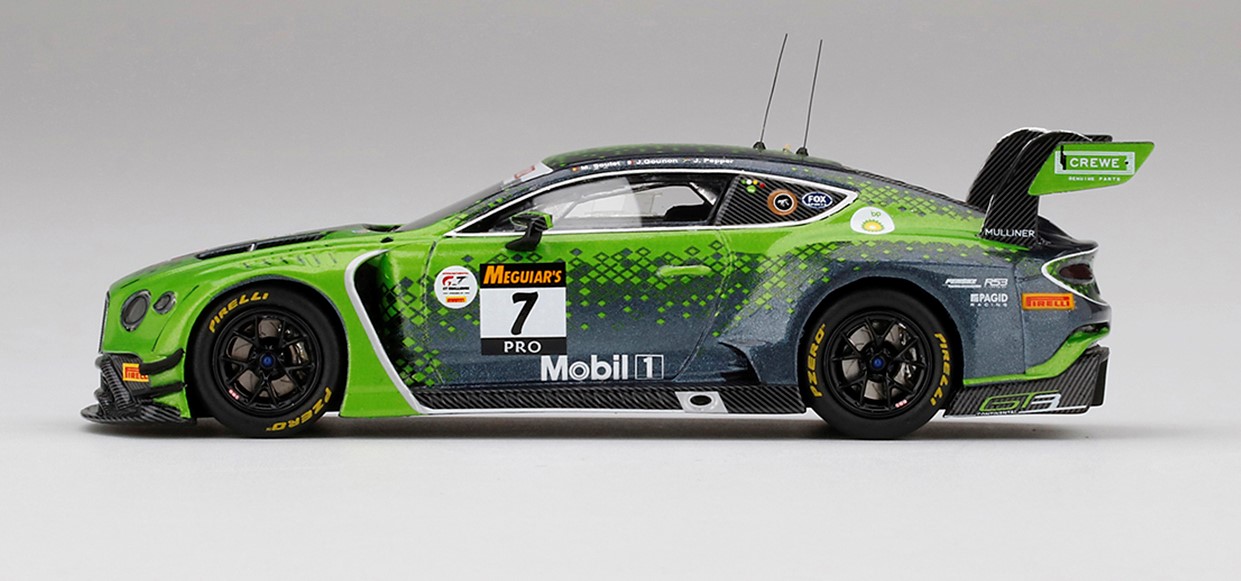 TSM: Bentley GT3, 1st Bathurst 12-hour 2020
TSM: Bentley GT3, 1st Bathurst 12-hour 2020
OK, that's it for another month. At the time of this update, the Collectorcon Fair scheduled for 28 November at Campbelltown is NOT showing on their website so this event has probably been cancelled. It looks like the first model fair for 2022 will be the Collectorcon Fair at Penrith on 27 March (nearly 5 months away) assuming Granville remains a non-starter. Remember, you can still satisfy your model car cravings by emailing me at info@f1scalemodels.com and I'll give you a quote for postage. Thanks for your support and happy collecting.
Australian Racing Series
- 2020 Bentley Continental GT3, Gounon/Pepper/Soulet (7) 1st Bathurst 12H (TSM)
- 2020 Mercedes-AMG GT3, Van Gisbergen/Whincup/Goetz (888) 3rd Bathurst 12h (Spark)
After Thoughts: "The Closest Finish at the Indy 500." The Indy 500 has delivered many thrilling finishes in its long history but none so enthralling and exciting as the 76th edition in May 1992. Early indications from the Spring test days predicted the race would be the fastest in history with the Lola-Buicks of Roberto Guerrero and Jim Crawford topping 230 mph laps, eclipsing the track record of 225.301 mph. The contest would be again between the Lolas, Penskes and Truesports but a new American chassis would be joining for the first time, the Galmer run by Galles Racing. In addition to the V6 Buicks and the Chevrolet-Indy V8 engines, the Newman-Haas and Chip Ganassi teams debuted the new Ford Cosworth XB engine.
 1992 Logo (Reproduced without permission - sorry!)
1992 Logo (Reproduced without permission - sorry!)
On the first day of practice week 1, Crawford in his Menard Lola-Buick set a lap of 229.609 mph. Later in the week, 4-time Indy 500 winner, Rick Mears crashed heavily and suffered a sprained wrist and a fracture to his left foot but was cleared to practice the following day. Three-time World F1 Champion Nelson Piquet was signed to drive the fourth Menard Lola but his inexperience on the fast oval saw him hit the wall nearly head-on, suffering serious foot, leg and ankle injuries. Unlike Mears, Piquet's Indy 500 adventure was over and his drive was taken over by Al Unser Snr. Amongst the rookies, Lyn St. James was hoping to be the second woman to qualify since Janet Guthrie in 1979.
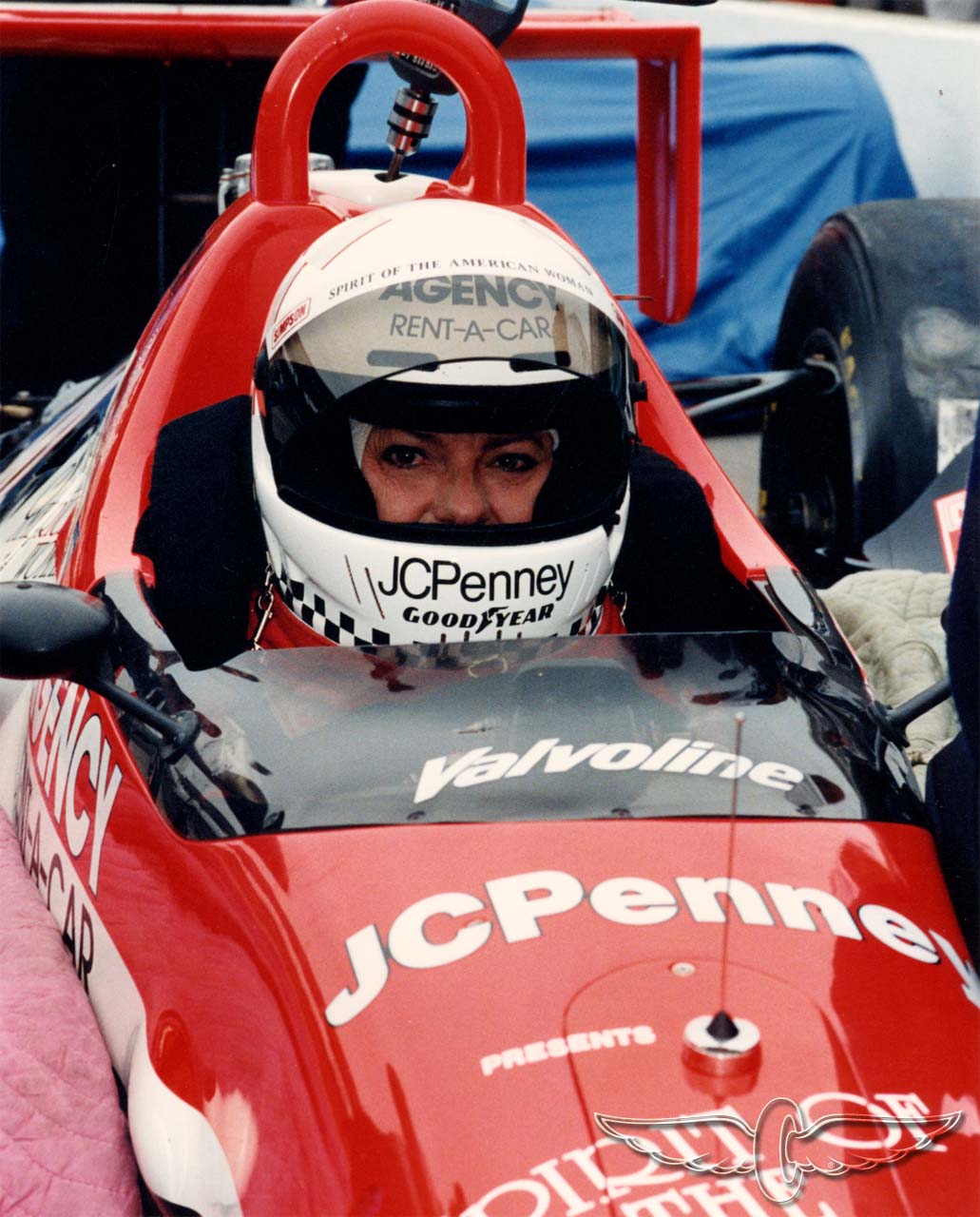 Lyn St. James Indy 500 1992 (Photo: IMS)
Lyn St. James Indy 500 1992 (Photo: IMS)
Pole day began with showers which delayed on-track activities until the afternoon. Roberto Guerrero set a four-lap record of 232.482 mph to take pole position. Due to the delayed start and various misadventures on track, the pole day qualifying was continued the following day and at the conclusion, 27 cars had qualified, leaving six spots on the grid to be contested at the next pole day. During the last day of practice week 2, rookie Jovy Marcelo spun into the wall at turn 1, his car slid along the wall before coming to a rest. His car suffered major damage to the front end and he was pulled from the wreck unconscious. He died shortly afterwards in hospital; his death was the first at Indianapolis in ten years. On the final Pole day and the following Bump day, the final six cars were added to the field of 33 cars, amongst them was Lyn St. James who qualified 27th. Canadian, Scott Goodyear was "bumped" out but his team mate had qualified; since Goodyear was the team's primary driver he was able to switch with his team mate but would have to start last in 33rd.
Race day dawned overcast and very, very cold. It didn't rain but no one would have been surprised if it had started to snow. Amongst the 33 drivers shivering in their cars waiting for the "Lady and Gentlemen, start your engines" announcement from Mary Hulman were an unprecedented 10 former winners of the 500, and of these, three were 4-time winners. The cold temperatures coupled with strong winds meant a cold track that made getting tyre temperatures up to optimum very difficult. On the parade lap, pole-sitter Guerrero's Lola-Buick suddenly snapped sideways as he tried to heat his rear tyres and clouted the inside wall; he was to be the first of many to fall victim to cold tyres. As the green flag waved, Michael Andretti starting in 6th shot to the lead and by lap 60 of 200 he held a 30-second lead. Inevitably, the yellow caution flag was brought out for various crashes and caution breeds more cautions so by mid-race nearly half the field had been eliminated. It was becoming a race of attrition. By contrast Michael Andretti was cruising, only losing the lead temporarily for pitstops and it was pretty much a race for second place. Meanwhile, Scott Goodyear in his Lola-Chev had worked his way from 33rd to third behind Al Unser Jr. in his Galmer-Chev. Then on lap 189, with a healthy lead, Michael Andretti's Lola-Ford coasted to stop with a broken fuel pump, bringing another caution. The track went green on lap 193 setting the stage for a shoot-out between Unser Jr. and Goodyear. With three laps to go, Goodyear made an unsuccessful pass for the lead causing him to fall back from Unser Jr. Goodyear kept closing the gap and appeared to be faster when the white flag came out for the last lap. Goodyear feigned right and then tried to slingshot past Unser on the home straight. He made the pass, but only after the pair had crossed the finish line. Unser had won by the slimmest margin in Indy 500 history(1) - 0.043 seconds(2).
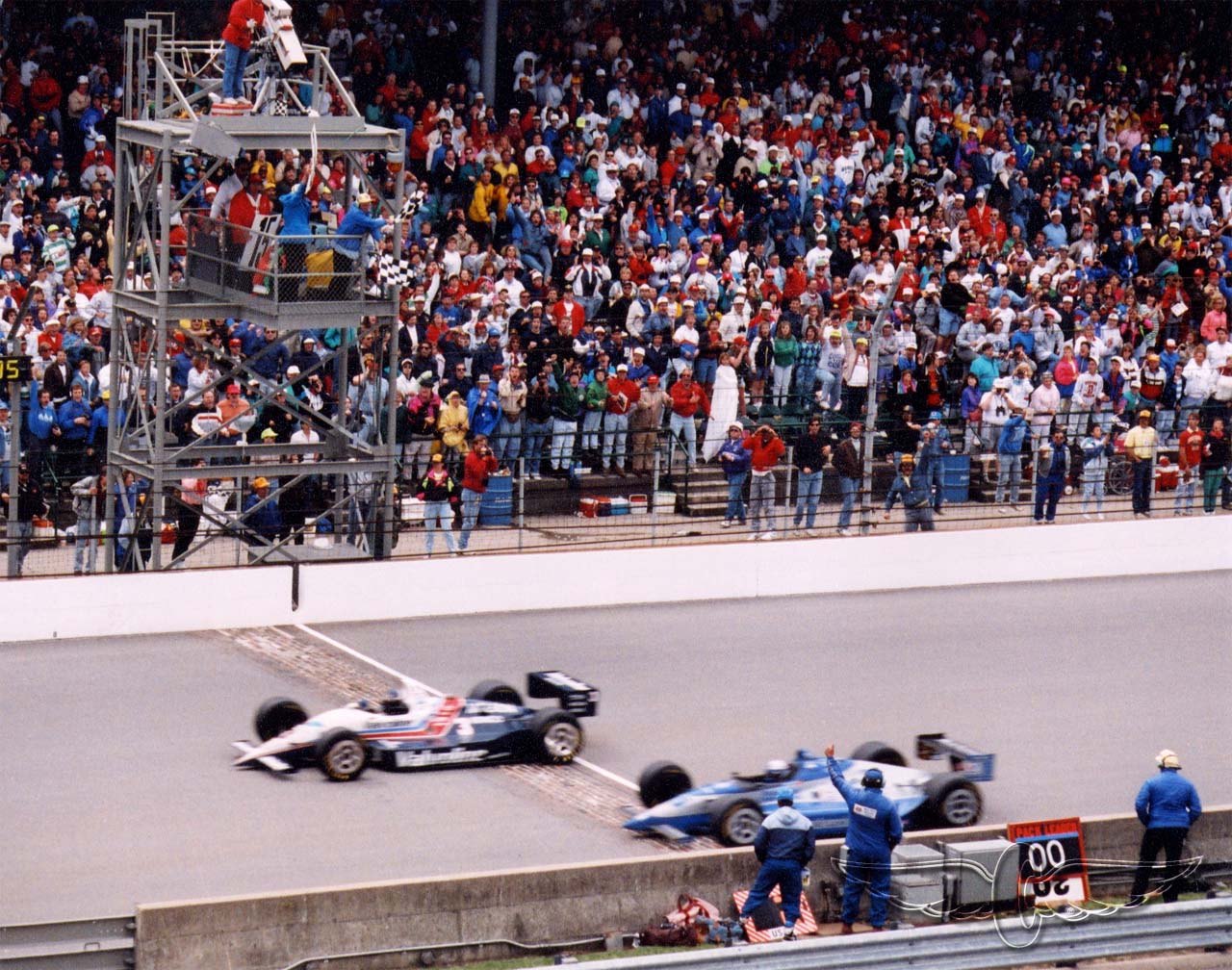 The finish. (Photo: DVD "Indianapolis 500: The '90's)
The finish. (Photo: DVD "Indianapolis 500: The '90's)
(1) In 2012, Dario Franchitti beat Scott Dixon by 0.0295 seconds but the race finished under yellow caution.
(2) Unofficially the margin was even slimmer at 0.0331 seconds. The timing transponder in Goodyear's car was located in the standard position, the left sidepod whereas Unser's transponder was installed in the nose of his Galmer car.
New Additions: October 2021
Hi everyone, welcome to the October update and I hope everyone is well. Unlike previous months, we can begin with some encouraging Covid-19 news for a change. The number of daily infections in NSW is trending downwards as the vaccination program is starting to take effect; it's projected the 70% double vaccination target will be reached around October 11th and lockdown restrictions will start be lessened at this time. Unfortunately, this comes too late for any events scheduled for October. As advised last month, the All British Day scheduled for 17 October has been cancelled and still no word regarding the monthly model fair at Granville, although I strongly suspect the venue will not be accessible by the public for a while, if at all. OK, back to the new additions for this month, a few deserve a special mention ...
Unquestionably, motor racing is a male dominated sport so it's rather refreshing to see an all-female driver line-up racing at Le Mans. In the 2020 edition of the 24 hour endurance race, Tatiana Calderon, Sophia Florsch and Beitske Visser drove the number 50 Oreca-Gibson, entered by the Richard Mille Racing Team to 13th place outright and 9th in the hotly contested LMP2 class. The trio also contested the 2021 Le Mans but were an early retirement after a collision on their 74th lap. All three drivers have impressive racing records in other motor sport categories, including F3.
 Spark: Oreca 07 Gibson #50 Le Mans 2020
Spark: Oreca 07 Gibson #50 Le Mans 2020
The 1970's was a decade where, if you had aspirations of becoming an F1 driver and you had some spare cash, in all likelihood there was a team happy to take your money. One such team was RAM Racing which acquired a pair of ex-works Brabham Ford BT44B and a BT42 as a spare for 1976. The Swiss journeyman driver, Loris Kessel was contracted to drive for RAM while the second seat was filled by no fewer than eight drivers. Lella Lombardi, with "Lavazza" coffee money earned herself three starting opportunities but only qualified once. One of the other drivers to drive for RAM that year was Danish driver Jacob "Jac" Nellemann. Little is known about Nellemann other than he was the Danish F3 Champion in 1976 and 77. Nellemann missed qualifying for the Swedish GP by 2/10th of a second despite having the use of the BT44B and the BT42. The 26th and last place on the grid was taken by Loris Kessel, the other RAM driver. It would be the only F1 appearance for Nellemann.
 Spark: Brabham BT44B J.Nellemann 76 Swedish GP
Spark: Brabham BT44B J.Nellemann 76 Swedish GP
American tuner Shelby American has reimagined the Mustang GT500 for the drag strip with the Shelby GT500 Dragon Snake concept. Revealed in 2019, the Dragon Snake features a retuned version of the GT500's 5.2-litre supercharged V8 fitted with a Shelby supercharger upgrade, raising its power output from 567Kw to 597Kw while still maintaining its street-legal status. In addition, other modifications were made to bolster its straight-line acceleration. The Dragon Snake name pays homage to Shelby American's drag racing version of the Shelby Cobra of the 1960's which was known as the "Dragonsnake". GT Spirt has produced two 1:18 versions of this car, one in black and the other in white with two blue stripes down the centre.
 GT Spirit: 1:18 Shelby GT500 Dragon Snake
GT Spirit: 1:18 Shelby GT500 Dragon Snake
Finally, I'd like to again thank all those who have supported me during these challenging times when model car collecting hasn't been a high priority. Until next month, happy collecting and stay safe.
Formula One
- 1968 Brabham Repco BT11, D.Charlton (22) South African GP (Spark)
- 1968 Brabham Climax BT11, J.Pretorius (23) South African GP (Spark)
- 1973 Brabham Ford BT42, J.Watson (9) US GP (Spark)
- 1976 Brabham Ford BT44B, J.Nelleman (33) Practice Swedish GP (Spark)
- 1983 Brabham BMW BT52B, N.Piquet (5) 1st Italian GP (Spark)
- 1983 Brabham BMW BT52B, R.Patrese (6) 1st South African GP (Spark)
- 1952 Connaught A, D.Poore (6) 4th British GP (Spark)
- 1972 March Ford 721, H.Pescarolo (16) Practice French GP (Spark)
- 1969 Matra Ford MS80, J.Stewart (4) 1st Dutch GP (Spark)
- 2020 Racing Point Mercedes RP20, L.Stroll (18) 3rd Italian GP (Spark)
- 1978 Tyrrell Ford 008, P.Depailler (4) 3rd Argentine GP (Spark)
- 1957 Vanwall VW5, T.Brooks (20) 2nd Monaco GP (Spark)
American Race Series
- 2020 Chevrolet Corvette C8R, Taylor/Catsburg/Garcia (3) Daytona 24H (TSM)
Le Mans / Sports Cars / Rally
- 1981 Lola Ford T600, de Villota/Edwards/Fernardez (18) Le Mans (Spark)
- 2020 Oreca Gibson 07, Calderon/Florsch/Visser (50) Le Mans (Spark)
- 2019 Porsche 911 GT3 R, E.Bamber (98) 3rd GT World Cup Macau (Spark)
- 1992 Toyota TS010, Lees/Brabham/Katayama (7) Le Mans (Spark)
- 1986 Ford Sierra RS500, A.Senna Rally Test (with Marlboro decals) (Minichamps)
- 1975 Lancia Stratos HF, Darniche/Mahe (180) 1st Tour de France Rally (Spark)
Road Cars
- 1980 Alfa Romeo GTV6 in red (Spark)
- 2017 Aston Martin Vanquish Zagato in white (TSM)
1:18 Models
- 2020 Shelby GT500 Dragon Snake Concept in white (GT Spirit)
- 2020 Shelby GT500 Dragon Snake Concept in black (GT Spirit)
After Thoughts: "The Worst Ever Ferrari Formula 1 Car." The Ferrari SF1000 from the 2020 season was a disappointing car by any measure. The SF1000 was an evolution of its predecessor, the SF90 and the team openly acknowledged they didn't have the fastest package with the SF1000. Leclerc finished a lucky second in the opening race and the Scuderia finished a lowly 6th in the Constructor's Championship, beating only Williams, Haas, Alfa Romeo and Alpha Tauri. After the final race of the season and his last race with Ferrari, Vettel commented that he was "happy that the season was over". But however bad the SF1000 was, it wasn't the worst car Ferrari ever produced; you'd have to cast your mind back forty-odd years to 1980 and to the Ferrari 312T5.
Ferrari made a radical design departure when it launched the first of the 312 T-series cars in September 1974. The most interesting aspect of the new car was the installation of a transverse-mounted five-speed gearbox (hence the "T" designation) located ahead of the rear axle line. The 312T enjoyed immediate success during the 1975 season with Niki Lauda winning the Drivers Championship and Ferrari, the Constructors Championship. After its debut season in 1975, the 312T evolved into the T2 (1976), T2B (1977), T3 (1978) and the T4 in 1979. 1979 was another stellar year for Ferrari with Jody Scheckter winning the drivers' championship and together with team mate Gilles Villeneuve, winning the Constructors' title. But with Ferrari deciding to go down the turbo engine path for 1981, Mauro Forghieri and his design team were busy working on a new chassis for the V6 1.5 litre turbo-charged engine that was to replace the venerable normally-aspirated 3-litre flat-12 engine used so successfully in the T cars. So, for 1980 a heavily revamped version of the T4 was pressed into service, but racing history will record that the 312T5 was a disaster.
Ferrari dismantled three perfectly good T4's and rebuilt them to T5 specification. This included much slimmer front ends to the monocoques, new bodywork, suspension geometry and aerofoils. Cosmetic changes were made to the T5's throughout the season but nothing could hide their basic lack of competitiveness, nor their inability to get the best out of the Michelin tyres which were now being developed to suit the increasingly competitive Renault turbos (only Ferrari and Renault used Michelins, the others used Goodyears). By contrast, the Cosworth DFV teams were able to further improve the aerodynamic efficiency of their cars with Alan Jones' Williams FW07 leading the way. Unreliability dogged the T5 throughout the season and it wasn't until the fourth race that Scheckter managed a 5th place; it was to be the reigning champions' only points finish for the whole season. Scheckter became increasingly frustrated with the T5 and he couldn't motivate himself to race for 10th place so mid-season he announced his retirement from racing despite being contracted to Ferrari for another year. He felt his decision was vindicated when at the Canadian GP at Montreal, he failed to qualify the woeful car.
 Ferrari 312T5 at the Turin National Auto Museum
Ferrari 312T5 at the Turin National Auto Museum
Meanwhile, Villeneuve tried valiantly to uphold the honour of Ferrari; he never gave up and in nearly every race he had his uncompetitive T5 in places where it had no right to be. But he found he was having to use his mirrors much more often in the "brouette" (wheelbarrow) which he called his tardy T5. It often seemed the mirrors were the only part of the car that worked. At the Italian GP, held at the Imola circuit near Maranello, Villeneuve gave the Italian fans something to cheer about when he fought his way from eighth on the grid to fourth after five laps. Then his right rear tyre exploded travelling at 180 mph and he flew off at Tosa slamming into the cement wall at unabated speed, destroying the left side of his T5 and scattering wreckage everywhere. The momentum shot the remains of his Ferrari back across the grass and onto the circuit in front of oncoming traffic, where it spun to a smoking halt. Cars took frantic evasive action, and miraculously Villeneuve was not hit; the crowd cheered loudly when he unstrapped his harness, climbed out and trotted away albeit rather unsteadily. At the end of the season, Villeneuve had scored a paltry six points from two fifth and two sixth place finishes.
Brumm: Ferrari 312 T5 1980 Italian GP
For the first time since 1973, Ferrari did not win a race for the entire season and the team finished 10th in the Constructors' Championship with eight points. Beyond question, the Ferrari 3-litre, 180-degree, 12-cylinder engine was the most effective of all Ferrari Formula One power units but the failure of the 312 T5 chassis in 1980 was a disappointing end to a golden era.
New Additions: September 2021
Hi everyone, welcome to the September update. The news is quite grim at the moment regarding the Covid pandemic with over a thousand daily infections being reported for NSW and the lockdown in Sydney has been extended to September 30. Consequently, the Hawkesbury Model and Hobby Show on 18/19th September has been cancelled, as well as the All British Day scheduled for 17th October. The CollectorCon Fair on 26th September hasn't been officially cancelled but take that as a given.
OK, just a few models added this month ... here are a couple of interest.
The 1982 Australian GT Championship was dominated by 1980 F1 World Champion, Alan Jones driving a Porsche 935 entered by Porsche Cars Australia. Incredibly, Jones won all nine races of the championship, with his rivals being Rusty French also in a Porsche 935, Colin Bond in a Porsche 944, Peter Brock (Chevrolet Monza) and Tony Edmondson (Alfa Romeo Alfetta GTV). The model of Jones' Porsche made by Spark erroneously has it as the 1983 Championship, but Jones did not defend his title that year as he was concentrating on his F1 comeback with Arrows. This is a 500 limited edition model
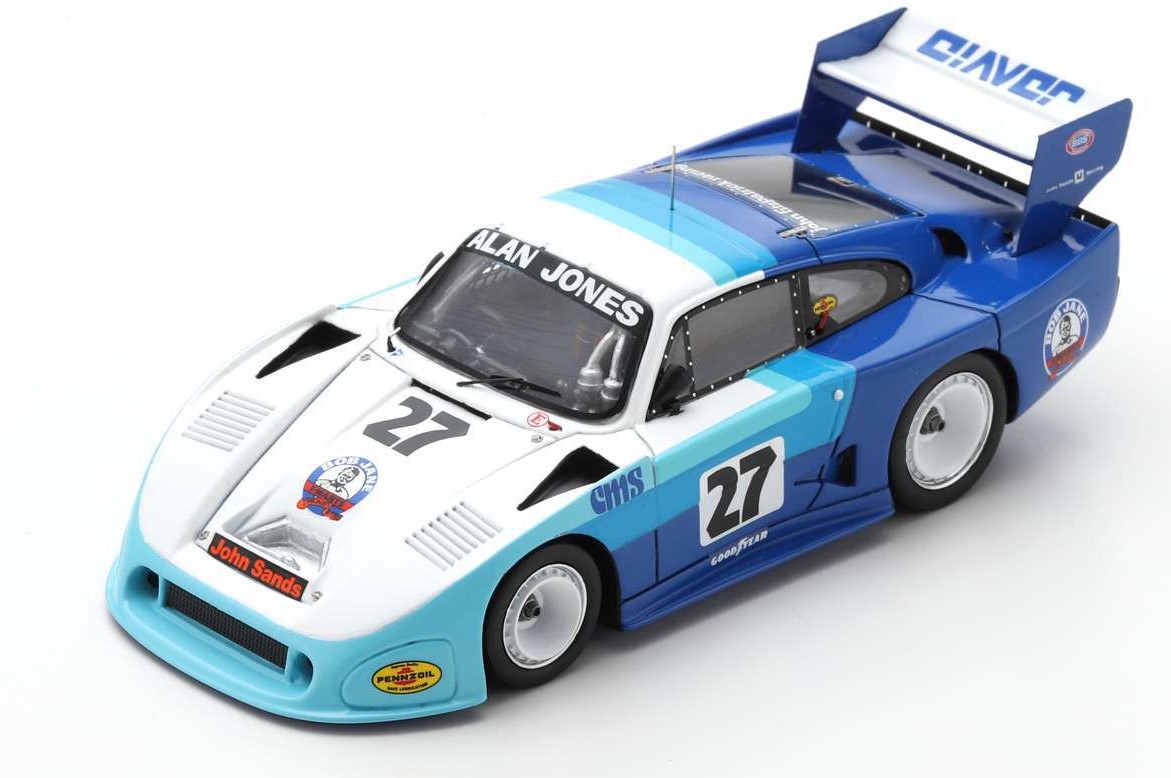 Spark: Porsche 935, A.Jones 1982
Spark: Porsche 935, A.Jones 1982
The Maverick Motors was a small boutique car manufacturer founded by H. Sterling Gladwing in California. The 1952 Maverick Sportster was a fibre-glass bodied Sport Custom promoted at the time as the "world's largest fibre-glass bodied car". The first Sportster was built on a 1940 LaSalle chassis with a flathead Cadillac V8 engine and was Gladwing's personal car. The 1930's classic styling mixed with contemporary 1950 flair made the car an instant hit. Seven complete cars were made and sold during the company's tenure from 1952 to 1968. Each of the seven Mavericks produced had unique features such as no doors, one door, tail light style, etc. In 1968, Maverick Motors closed down due to lack of funds. Esval has produced a limited edition of 250 models of the Maverick in white.
 Esval: 1952 Maverick Sportster
Esval: 1952 Maverick Sportster
That's it for another month; no swap meets of course in September and October but you can still purchase your model cars by mail order. Just drop me an email at info@f1scalemodels.com. Until next month, stay safe and happy collecting.
Formula One
- 1966 Brabham Climax BT7, J.Bonnier (18) British GP "Anglo-Suisse Racing" (Spark)
- 1973 March Ford 731, J.Hunt (27) 2nd US GP (Spark)
- 1973 McLaren Ford M23, J.Scheckter (30) British GP (Spark)
- 1977 McLaren Ford M23, G.Villeneuve (40) British GP (Spark)
- 2020 McLaren Renault MCL35, C.Sainz Jr. (55) 2nd Italian GP (Spark)
- 2017 Toro Rosso Renault STR12, P.Gasly (10) 13th Mexico GP (Minichamps)
Australian Race Series
- 1983 Porsche 935 K4, A.Jones (27) Aust. GT Championship, Adelaide (Spark)
- 2020 Mercedes-AMG GT3, Engel/Stolz/Buurman (77) 5th Bathurst 12H (Spark)
- 2020 Porsche 911 GT3 R, Jaminet/Pilet/Campbell (911) Pole Bathurst 12H (Spark)
American Race Series
- 1981 Porsche 935 K3/80, Garretson/Rahal/Redman (9) 1st Daytona 24H (Spark)
- 1987 Porsche 962, Holbert/Robinson/Bell/Unser jr.(14) 1st Daytona 24H (Spark)
- 1991 Porsche 962, Pescarolo/Haywood/Jelinski/Wollek (7) 1st Daytona (Spark)
- 2007 Riley Lexus Mk XI, Pruett/Duran/Montoya (1) 1st Daytona 24H (Spark)
Le Mans / Sports Car Racing
- 1966 Porsche 906, Mairesse/Muller (148) 1st Targa Florio (Spark)
- 1970 Porsche 908/03, Siffert/Redman (12) 1st Targa Florio (Spark)
Road Cars
- 1953 Kaiser-Frazer Carolina in yellow (Esval)
- 1952 Maverick Sportster in off-white (Esval)
1:18 Scale
- 1991 Mazda 787B, Weidler/Herbert/Gachot (55) Le Mans Winner (Spark)
After Thoughts: "The Forgotten F1 Circuits Series #2 - Porto(1), Portugal." We have the Covid pandemic to thank for the return of the Portugese GP in 2020 after an absence of 23 years. It was last held in 1996 at the Estoril circuit near Lisbon and with a number of circuits cancelling their races in 2020, the FIA scrambled to find replacement races. So the Portugese GP returned to the calendar in 2020 and '21 at the Algarve International Circuit in Portimao but it does not have a contract for 2022.
The first World Championship Portugese Grand Prix was held way back in August 1958 on the Circuito da Boavista street course in Porto, a coastal city in northwest Portugal famous for its excellent Port wine. The course began at the harbour-front "Espanada do Rio de Janeiro", continued on "Avenida da Boavista", (hence the circuit's name), and then twisted its way through small neigbourhoods back to the start-finish line. The Boavista circuit was a narrow, hazardous course lined with houses, trees and had many elevation changes and fast sweepers. The fast and long 4.6 mile (7.4 Km) circuit also presented additional challenges for the drivers such as kerbs, walls, drains, lampposts, cobblestones and tramlines. It wasn't a difficult circuit to learn but many of the turns allowed a number of different approaches, whether to dodge the tramlines or the bumps or both.
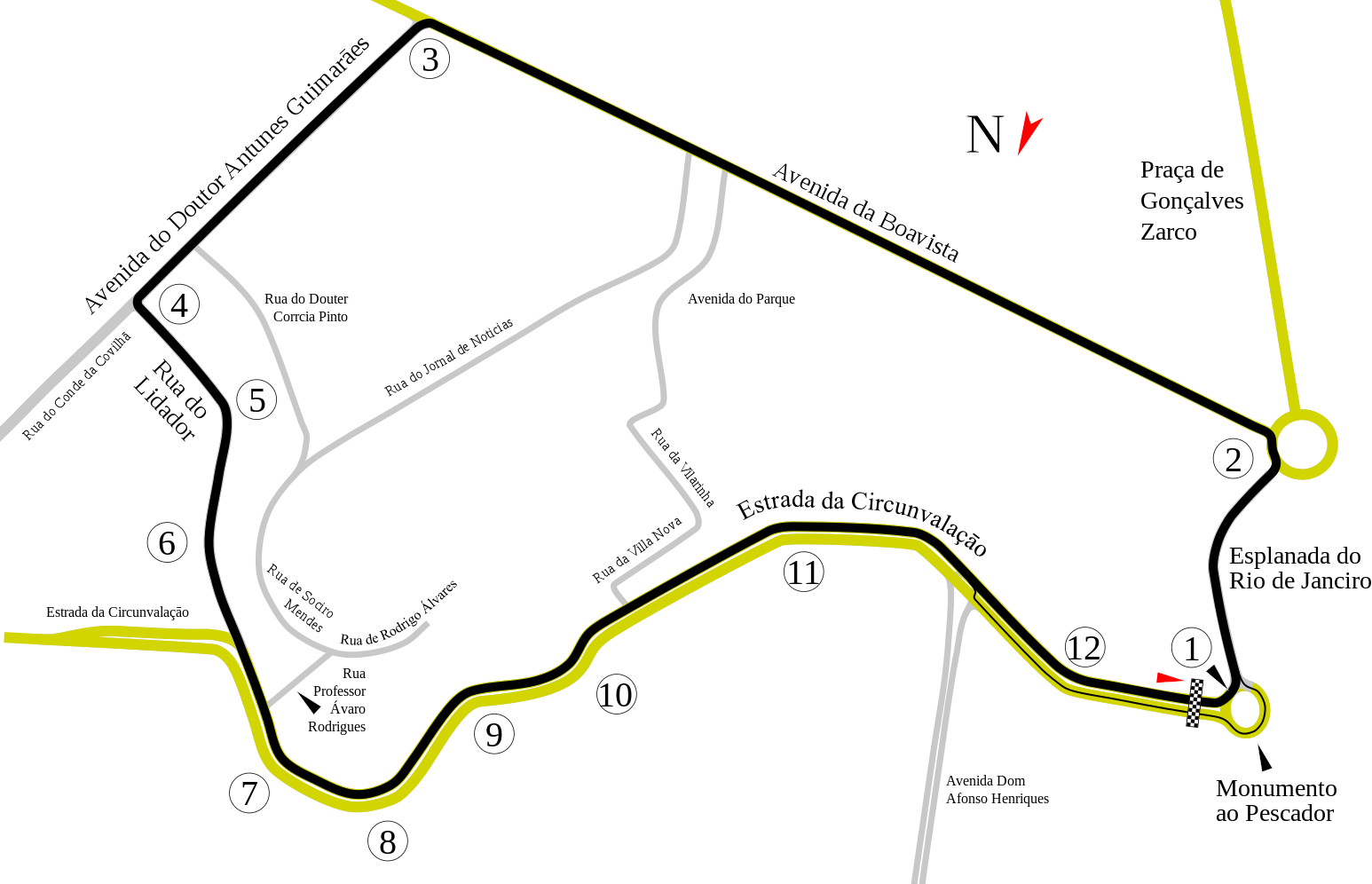 Boavista Circuit, Porto, Portugal (W.Pittenger)
Boavista Circuit, Porto, Portugal (W.Pittenger)
 Porto Grand Prix Poster 1958 (www.circuitodaboavista.com)
Porto Grand Prix Poster 1958 (www.circuitodaboavista.com)
The first F1 race on the Boavista circuit in 1958 saw Stirling Moss on pole in his Vanwall VW5, followed by Mike Hawthorn (Ferrari 246) and Stuart Lewis-Evans also in a Vanwall. Moss and Hawthorne were at this point, in a tight battle for the championship after eight races. Fifteen cars left the start line with Moss in the lead after the first lap with Hawthorne behind him but the positions were reversed after the second lap with the pair steadily drawing away from the field. By half-distance, 25 laps, Moss was comfortably in the lead as Hawthorne's brakes were fading. On his last lap of the race, Hawthorne who was still in second, spun and stalled the Ferrari engine up an escape road, meanwhile Moss had finished to win the first ever Portuguese GP. Moss, on his lap of honour came across Hawthorne who was busy pushing his Ferrari trying to restart it; he stopped to see how Hawthorne was getting on. Hawthorne was so busy pushing, he didn't look where he was going and having got up enough speed he jumped in and restarted his car and at that point the car mounted the footpath going in the opposite direction of the circuit. Course observers reported that Hawthorne had restarted his car in the wrong direction so was disqualified, losing seven valuable points. Later, the disqualification was overturned as being on the footpath did not constitute driving on the circuit in the wrong direction, the stewards accepting the confirmation from Moss who was an eye witness. Moss' sportsmanship was to cost him the championship when Hawthorne won it by a single point.
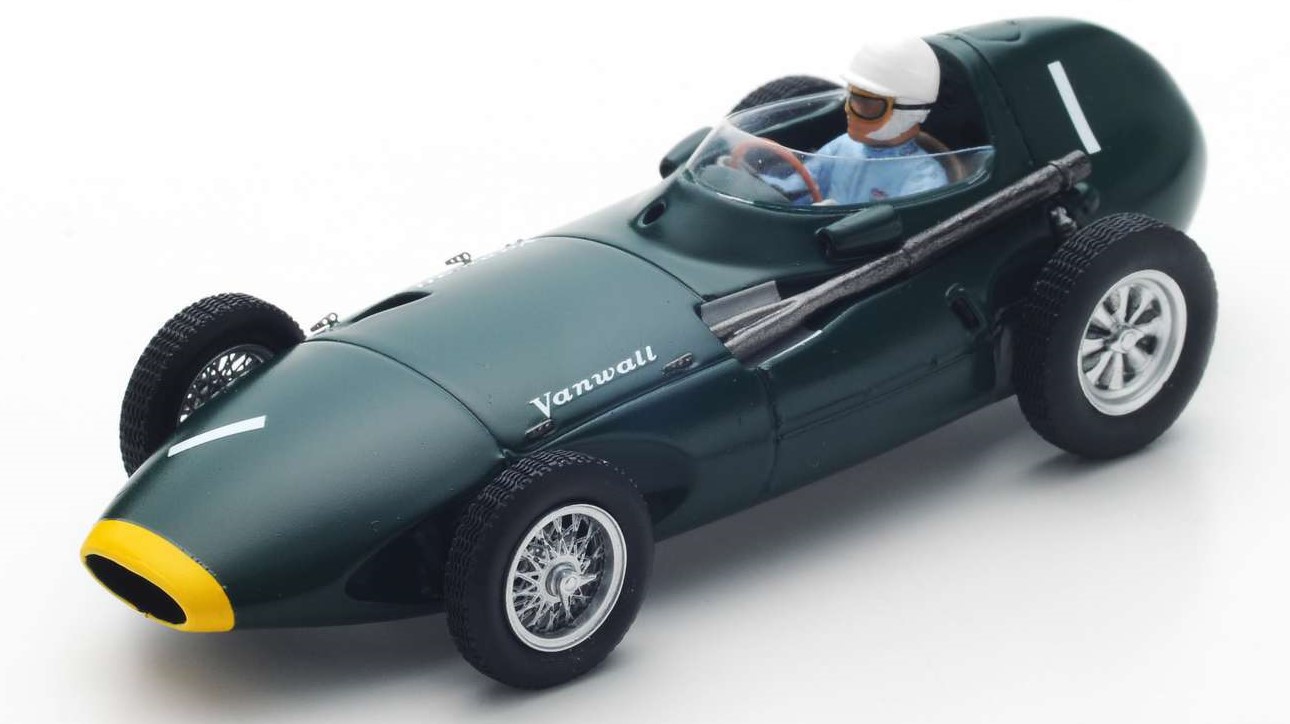 Spark: 1958 Vanwall driven by Stirling Moss
Spark: 1958 Vanwall driven by Stirling Moss
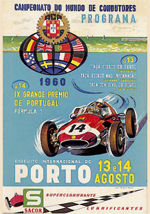 Porto Grand Prix Poster 1960 (www.circuitodaboavista.com)
Porto Grand Prix Poster 1960 (www.circuitodaboavista.com)
The second Portuguese GP in 1959 was moved to the Monsanto circuit, another street circuit located near Lisbon, but in 1960, the GP returned to the Porto circuit. Reigning world champion, Jack Brabham had a troubled start to the season in his Cooper but struck form mid-season, winning four races on the trot before coming to Portugal. After the start, Dan Gurney in a BRM shot to the lead from 2nd on the grid, with Brabham slotting into 2nd from the 3rd grid position. Gurney was still in front at the start of the second lap, a very eventful one for Brabham ...
" 'After the straight and the left-hander,' remembered Brabham, 'you go uphill and along the tramlines. Then you have to turn left but the tramlines go straight on. I came up and moved inside to overtake but I got myself into the tramlines going straight on like a tram and it was obvious I wouldn't be able to stop. I thought, I'll have to stay in the tramlines all the way to the depot, wherever that is.' Finally he slowed and managed to extricate the Cooper before turning round and heading back towards the circuit. The crazy detour had cost him six places, plunging him from 2nd to 8th" (2)
By mid-race Brabham had worked his way into third, behind Phil Hill (Ferrari) and John Surtees (Lotus). Brabham eventually passed Hill and Surtees overshot a corner so Brabham won the Portugese GP and his second world championship. The GP ended with drama when Moss (Lotus) locked his brakes when entering a corner and stalled his engine, not unlike the Hawthorne incident in 1958. Moss turned his car in the opposite direction, restarted it downhill, did a U-turn and was disqualified. Unlike Hawthorne, the disqualification was upheld. 1960 was the final year the GP was to be held at the Porto circuit and also the last Portugese GP until returning in 1984 at the Autodromo do Estoril.
45 years after the last GP at the Porto circuit, a revival race was held in 2005 for historical GP cars and was held every two years thereafter. However, after 3 editions, the Porto Historic Grand Prix was cancelled after the 2009 event due to financial considerations.
(1) Often referred to as "Oporto" by the British.
(2) "Motor Racing's Strangest Races" by Geoff Tibballs. Page 130.
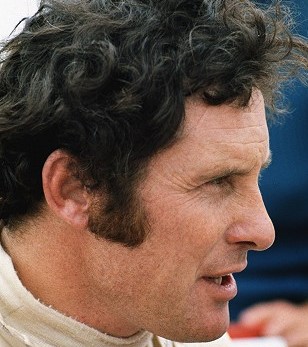 Vale: Graham McRae (5 March 1940 - 4 August 2021) NZ Motorsport Legend
Vale: Graham McRae (5 March 1940 - 4 August 2021) NZ Motorsport Legend
Breaking News - 2 August 2021: Hawkesbury Model & Hobby Show Cancelled
Due to the extension of the Greater Sydney lockdown until 28 August, the Sydney Antique Machinery Club has decided to cancel the Clarendon Rally on 18th/19th September, this includes the Hawkesbury Model and Hobby Show.
New Additions: August 2021
Hi everyone, welcome to the August update. The news goes from bad to worst with our Covid outbreak with no sign of the spread being contained, in fact the opposite being the case. Additional Local Government Areas are now in total lockdown with the army called in to enforce health orders and the stay-at-home order for greater Sydney has been extended until 28 August. The Shannons Classic Day at Eastern Creek, scheduled for 15 August was initially postponed but now the organisers have completely cancelled the event for this year. Obviously, there won't be a model fair at Granville this month and I suspect there won't be one until sometime next year. Now I'm quite worried the Hawkesbury Model and Hobby Show in mid-September may also be at risk of cancellation as will the CollectorCon on 26 September. Anyway, back to model cars and the new additions for this month.
It's hard to believe this car was conceived nearly seventy-years ago. The 1953 Studebaker Manta Ray was a fibre-glass bodied sport custom built by two aircraft designers, Glen Hire and Vernon Antoine in California. This concept car was created on a 1951 Studebaker Commander chassis and the creators wanted to incorporate the swift flowing lines of a jet fighter plane into their car's styling and infused the design with many jet-age styling elements. Only one car was ever built and it was acquired by a collector in Kansas who kept it in storage until his death in 1990. His son then took ownership and restored it to driving condition and repainted it from gold to light pink. The Manta Ray made its first modern public appearance at the 2016 Amelia Island Concours. This open-top model is by Esval and would be a welcome addition for collectors of concept cars.
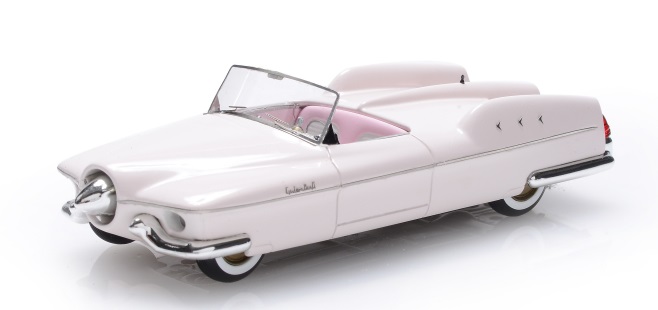 Esval: 1953 Studebaker Manta Ray
Esval: 1953 Studebaker Manta Ray
Now for something a little more modern; a trio of models from TrueScale Miniatures. Firstly, the McLaren Senna, produced as a limited-edition mid-engined sports car by McLaren Automotive and unveiled at the 2018 Geneva Motor Show. Here's what McLaren says about its car, "It is the most track-focused road car we have ever built, and it will set the fastest lap times of any McLaren to date. That is what has driven us to build a track car that is unashamedly without compromise. One that is legalised for road use, but not sanitised to suit it. Nothing else matters but to deliver the most intense driving experience around a circuit." Enough said, except that it has a 4L twin-turbocharged V8 and takes 2.8 seconds from 0-100km/h. A blue/black and a yellow/black version are available at $110 each.
Another V8-powered mid-engine sports car, the 2020 Chevrolet Corvette Stingray is, according to the company is the fastest Corvette Stingray ever built. It will rip from 0-100km/h in 3 seconds and is powered by a 6.2L V8. TSM430495 ($110).
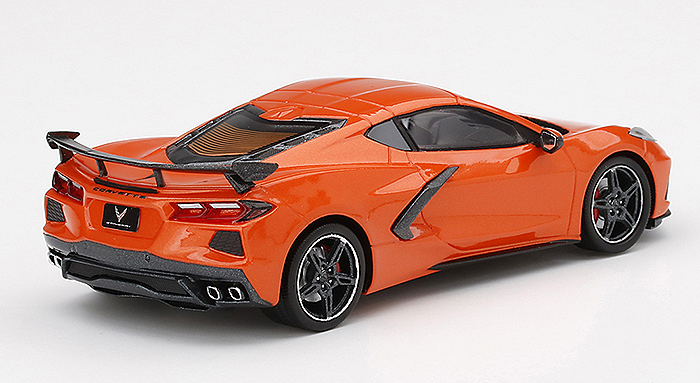 TSM: 2020 Chevrolet Corvette Stingray
TSM: 2020 Chevrolet Corvette Stingray
The final V8 powered car featured is the 5.2L supercharged Ford Mustang Shelby GT500 which is a much more practical car to drive the family down to the shops with seating for four. During testing, it reached 100km/h in a relatively sedate 3.4 seconds. TSM430478 ($110).
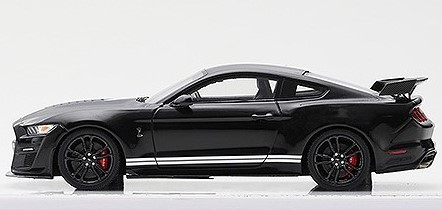 TSM: 2021 Ford Mustang Shelby GT500
TSM: 2021 Ford Mustang Shelby GT500
OK, that's it for another month. Remember you can email me with your orders and let's hope for a brighter month in September, until then, stay safe and happy collecting.
Formula One / FormulaThree
- 2003 Dallara Mugen F303, N.Rosberg (6) Macau F3 Final "Carlin Motorsport" (Minichamps)
- 1985 Lotus Renault 97T, A.Senna (12) Senna Collection New Series (Minichamps)
- 2020 Mercedes AMG W11, G.Russell (63) 9th Sakhir GP (Spark)
- 2020 Mercedes AMG W11, L.Hamilton (44) Turkish GP w/pit boards (Spark)
- 2018 Sauber Ferrari C37, C.Leclerc (16) 6th Azerbajian GP (Minichamps)
- 2019 Toro Rosso Honda STR14, D.Kvyat (26) 3rd German GP (Minichamps)
American Race Series
- 2018 BMW M8 GTLM, Edwards/Krohn (24) IMSA GT Challenge at VIR (TSM)
- 1963 Ford Galaxie, K.Miles (28) Riverside (Spark)
Le Mans / GT3
- 1994 Alpa Ford LM, Minassian/Bourdais/Couvreur (8) Le Mans (Spark)
- 2017 BMW M6 GT3, C.Mostert (90) FIA World Cup Macau (Minichamps)
- 2017 BMW M6 GT3, Tresson/Schiwietz/Walk./v.L.(101) 24h Nurburgring (Minichamps)
- 2018 BMW M8 GTE, Blomqvist/Felix da Costa (82) 2nd LMGTE WEC Fuji 6H (TSM)
- 2019 BMW M8 GTE, Tomczyk/Catsburg/Eng (81) Le Mans (TSM)
- 1969 Matra Simca MS630/650, Servoz-Gavin/Muller (34) Le Mans (Spark)
Road Cars
- 2020 Chevrolet Corvette Stingray in orange (TSM)
- 2021 Ford Mustang Shelby GT500 in shadow black (TSM)
- 2018 McLaren Senna in blue/black (TSM)
- 2018 McLaren Senna in yellow/black (TSM)
- 2019 Porsche 992 Carrera S in red (Spark)
- 1953 Studebaker Manta Ray in light pink (Esval)
After Thoughts: "The Unheralded Drivers Series #5 - Johnny Dumfries." With the recent and premature passing of Johnny Dumfries, it's an opportune time to highlight the career of this driver who found himself in the right team, at the wrong time. Born on 26 April 1958, he was named John Colum Crichton-Stuart, the 7th Marquess of Bute or the Earl of Dumfries and he adopted the name Johnny Dumfries during his racing career. Unhappy with his schooling at an expensive public school, he left at the age of 16 to work as a builder before landing a job at Williams F1 as a van driver when he was 19. The following year in 1978, he became a mechanic for the BS Fabrications McLaren team and soon started racing in 100cc karts. Dumfries progressed to Formula Ford in 1981 and was introduced to a sponsor named Luigi Graziano who thought Dumfries was ready for F3 in 1983. Dumfries was impressive against drivers such as Martin Brundle and Ayrton Senna which led to a sponsorship deal with BP for 1984. That year he completely dominated the British F3 championship winning 10 races and more impressively, despite missing some clashing races he was a close second in the European F3 Championship. Then there came an offer to join Tyrrell in F1 to replace Martin Brundle who broke his legs in Dallas.
Dumfries considered the offer but realising the Cosworth powered Tyrrell was uncompetitive against the turbo powered opposition, declined the offer. But Dumfries did accept offers to test for some F1 teams eventually joining Ferrari as a test driver for 1985. He also joined the newly created FIA International Formula 3000 Championship, competing for the Onyx Racing team but it turned out to be a disappointing season. In 1986, Dumfries made his breakthrough into F1.
At Lotus Renault, Senna had vetoed the signing of Derek Warwick for the second Lotus seat for 1986, on the grounds that the team did not have the resources to run two front-running cars, instead Dumfries was chosen for the drive as the number 2 driver and initially he was tasked with developing the new and unreliable six-speed gearbox. He wasn't able to score any points until the 11th race at Hungary where he finished 5th, and there was one other points-scoring race for 6th at the season ending Australian GP. Dumfries finished 13th in the championship with 3 points. For the following season, Lotus had negotiated a Honda engine deal and along with it came Satoru Nakajima thus ending Johnny Dumfries one and only season in F1. What promised to be a good move, Dumfries ended up as Senna's test mule.
When 1987 came around, Dumfries received many offers to race sports cars and his second place at the Brands Hatch 1000km in a Porsche 962 brought him to the attention of Tom Walkinshaw. He was drafted into Walkinshaw's Jaguar team for 1988 and the highlight of that season was Dumfries' famous win at Le Mans in the Jaguar XJR-9 with Jan Lammers and Andy Wallace. Unfortunately, the rest of the season wasn't such a success and Walkinshaw fired him at the end of the year. Dumfries ended up at Toyota for 1989 and 90 driving the Toyota 88C and the 89CV, he was also busy as a test driver for Benetton but his career was fast reaching its close. After a final tilt at Le Mans in a Courage in 1991 he retired from racing to run the various family businesses.
 IXO: Jaguar XJR-9 Le Mans 1988
IXO: Jaguar XJR-9 Le Mans 1988
Johnny Dumfries died of cancer on 22 March 2021 at the age of 62.
 Vale: Carlos Reutemann (12 April 1942 - 7 July 2021)
Vale: Carlos Reutemann (12 April 1942 - 7 July 2021)
Breaking News - 7 July 2021: Collector Con Cancelled
Due to the extension of the Greater Sydney lockdown for another week to the 16 July, the Collector Con event on 25 July has been cancelled. As the venue is a recreational facility, it is anticipated that there will be a number of Covid restrictions still in effect at the end of the month. The next Collector Con event is on 26 September.
New Additions: July 2021
OK, it's official, we are now on the slippery slide towards Christmas. Welcome to the July update. Firstly, a grim Covid report - the Greater Sydney and surrounding areas are currently under a two-week lockdown order due to an outbreak of the delta variant of the virus. Obviously, there will not be a Granville Model Fair in July and almost certainly not in August as well. In my opinion, I don't think the Granville Fair will return this year, so collectors should seriously consider attending the Penrith CollectorCon Toy Fair for their model car "fix". At this stage, the CollectorCon is still going ahead on the 25 July.
Not too many new additions to announce this month, but there were three models that caught my eye. The 2020 World Challenge Europe Endurance Cup season featured four races; the 3-hours of Imola, the 6-hours of Nurburgring, the 24-hours of Spa and the Circuit Paul Ricard 1000km. Three other scheduled races were cancelled due to the Covid pandemic. The GPX Racing Team, entered three Porsche 911 GT3 R's with replica liveries from a bygone era. Back in 1970, three Porsche 908/3s entered by John Wyer raced in the Targa Florio in three distinct Gulf liveries and the three GPX Porsche 911s sported identical Gulf colours, including the same race numbers and the "ace" playing card symbols. The #12 car (The Diamond) was driven by Australian, Matt Campbell and he and his two co-drivers finished 2nd overall in the Drivers' Championship. The GPX Team also finished 2nd in the Team's Championship. Spark have released all three 911's and these are sure to be a 'must-have' for Porsche collectors and even those who just collect Gulf cars.
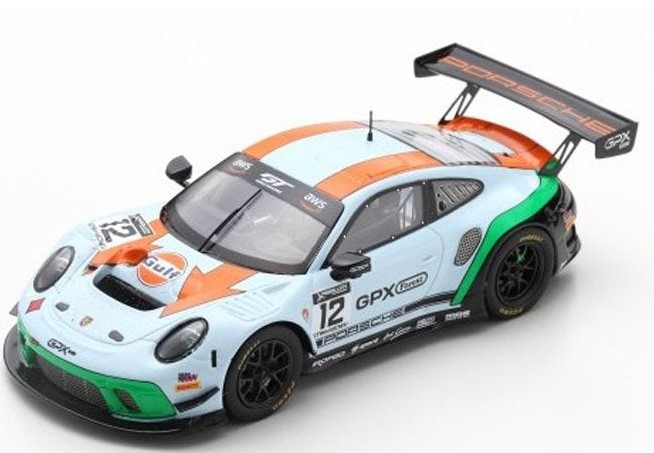 Spark: Porsche 911 GT3 R ("The Diamond")
Spark: Porsche 911 GT3 R ("The Diamond")
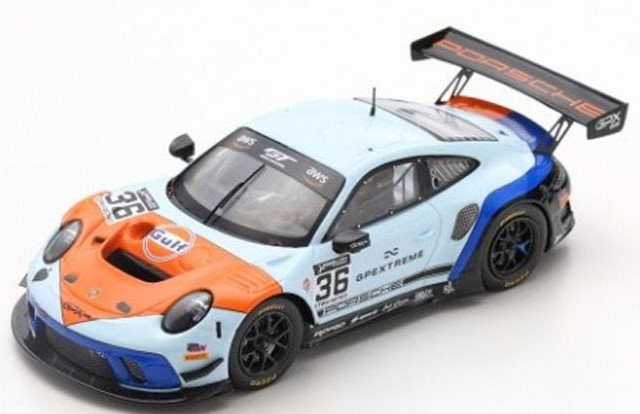 Spark: Porsche 911 GT3 R ("The Spade")
Spark: Porsche 911 GT3 R ("The Spade")
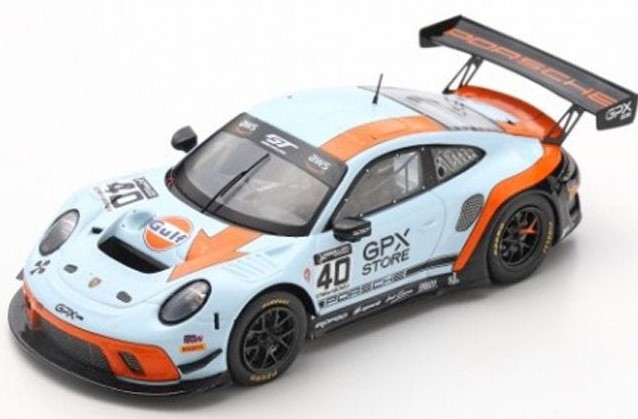 Spark: Porsche 911 GT 3 R ("The Club")
Spark: Porsche 911 GT 3 R ("The Club")
OK, that's it for another month. Let's hope this lockdown ends on time and the Collectorcon can go ahead on the 25 July. Finally, just another reminder, I can still help with your collection even without the Toy Fairs, just email me and I can post your models. Stay safe and happy collecting.
Formula One
- 2020 Alpha Tauri Honda AT01, P.Gasly (10) 7th Austrian GP (Spark)
- 1974 BRM P201, F.Migault (37) Dutch GP (Spark)
- 1978 Ensign Ford N177, D.Daly (22) Dutch GP (Spark)
- 1981 Lotus Ford 88, Presentation car (11) w/ C.Chapman driving (Spark)
- 2020 McLaren Renault MCL35, C.Sainz Jr. (55) 5th Austrian GP (Spark)
- 2020 Racing Point Mercedes RP20, S.Perez (11) 6th Styrian GP (Spark)
- 2019 Williams Mercedes FW42, G.Russell (63) race car (Minichamps)
Australian Race Series
- 2020 Mercedes AMG GT3 Evo, Fraga/Buhk/Marciello (999) 6th Bathurst 12 hr (Spark)
American Race Series
- 1969 Triumph GT6, M.Downs (44) SCCA ARRC Group 44 (Spark)
Le Mans / Sports Car Racing
- 1961 Porsche 718 RS61, Moss/Hill (136) Targa Florio (Spark)
- 2019 Porsche 911 GT3 R, S.Grove/B.Grove (4) 3rd FIA GT Cup Vallelunga (Spark) Restock
- 2020 Porsche 911 RSR, Bleekemolen/Fraga/Keating (57) Le Mans (Spark)
- 2020 Porsche GT3 R, Pilet/Jaminet/Campbell (12) "The Diamond" GT WCE (Spark)
- 2020 Porsche GT3 R, Valentini/Fatien/Pastorelli (36) "The Spade" GT WCE (Spark)
- 2020 Porsche GT3 R, Dumas/Preining/Deletraz (40) "The Club" GT WCE (Spark)
- 1988 Spice Ford SE 88C, Ballot-Lena/Ricci/Anduet (107) Le Mans (Spark)
After Thoughts: "Lotus 88 - The car that was banned before it could race." By 1981 the ground effects era for Formula One was coming to an end when the FIA banned movable skirts on the sides of the cars; the cars had simply become too dangerous. The governing body mandated a fixed 60mm of ground clearance which would allow air to escape from the sides of the car, thus negating the principles of ground effects. However, the ingenious (devious) engineers soon found a way to circumvent this ban with Lotus and other teams developing systems to lower the car while it was on the track and raise it at slower speeds when it came into the pits. But to ensure the air flow remained under the car during the race, the chassis had to be very stiffly sprung to stop the car from "rolling" when cornering and "pitching" under braking and acceleration. It meant the cars had little or no suspension and the drivers felt every little bump on the track which was so severe they complained of blurred vison. The cars became nearly undriveable.
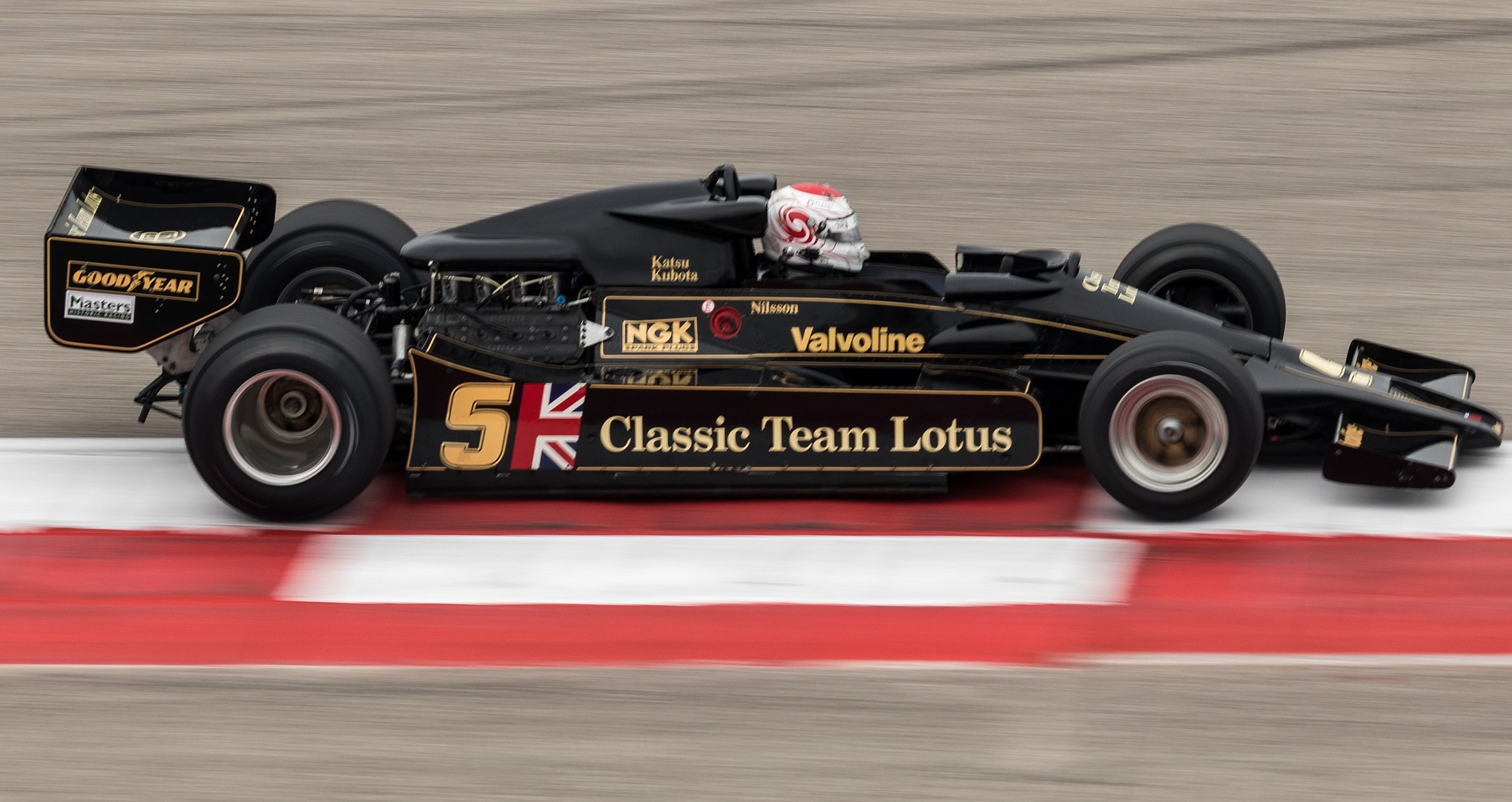 Lotus 78, the first ground effects car with side skirts (photo: mrlaugh)
Lotus 78, the first ground effects car with side skirts (photo: mrlaugh)
Lotus 79, RH side venturi tunnel, essential for ground effects cars. (photo: J.Chapman)
Lotus boss, Colin Chapman along with Peter Wright, Tony Rudd and Martin Ogilvie believed the solution was to build a car with a twin chassis, one inside the other. The car was called the Lotus 88. Basically, the car consisted of a primary, outer chassis that carried the aerodynamic bodywork, the side pods and skirts. This outer chassis, designed to provide the ground effects aerodynamic downforce was suspended by extremely stiff coil spring dampers. The secondary, inner chassis containing the driver cockpit, fuel cell and engine was independent of the outer chassis and relatively softly sprung . This allowed the driver to be in a more comfortable position as he wouldn't feel all the harsh bumps and he could concentrate on driving at 10/10th. Both Lotus drivers, Mansell and de Angelis reported the car was pleasing to drive and responsive.
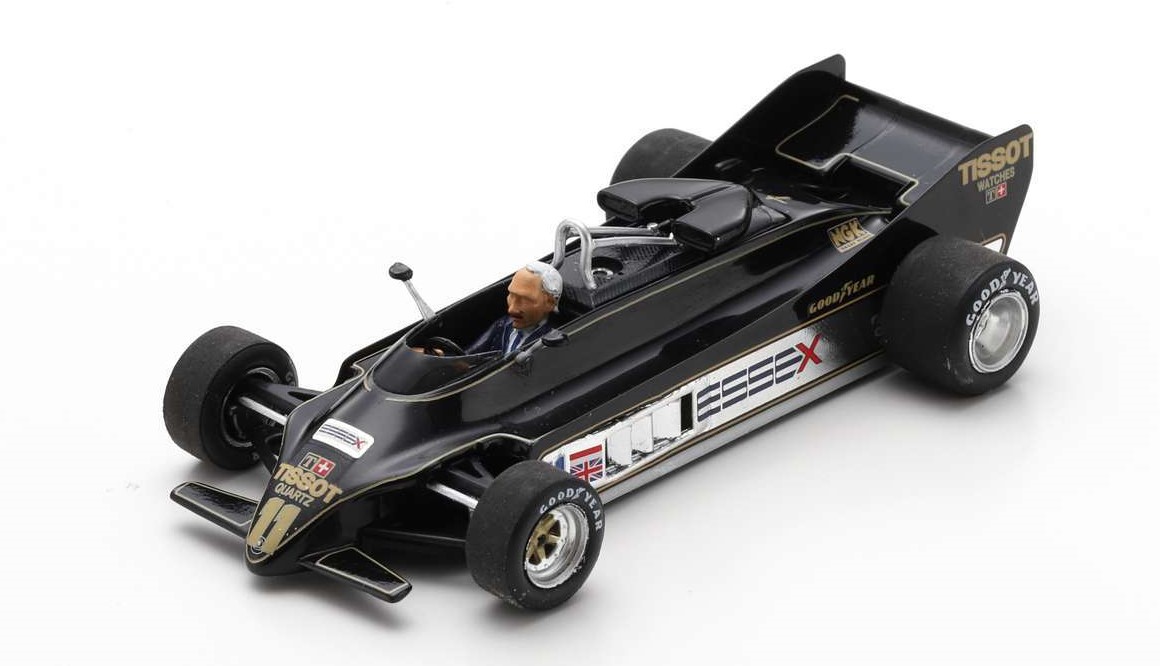 Spark: Lotus Ford 88 "Twin-Chassis" 1981 with Colin Chapman in the driver's seat.
Spark: Lotus Ford 88 "Twin-Chassis" 1981 with Colin Chapman in the driver's seat.
The Lotus Ford 88 appeared at the first race of 1981 season, the US West GP at Long Beach and was immediately declared illegal and disqualified after the Friday practice session. This was despite the fact the scutineers had declared the car legal but was protested by 10 of the 15 rival teams. Frank Williams stated "From our understanding of the regulations, the Lotus 88 is not legal by the letter of the law, let alone the spirit. If it is accepted as legal, then we shall all have to build similar cars to remain competitive, and the costs will be enormous." This hinted at the underlying opposition to the Lotus 88, the other teams did not want to have to copy another of Chapman's innovations. Chapman appealed the decision and hired the defence lawyer who had previously represented Richard Nixon. The FIA upheld the decision declaring the outer chassis was actually an aerodynamic device that acted directly on the wheel uprights, a feature that had been banned to improve the safety of fitting aerofoils to the cars. Despite further protests by Chapman who even boycotted the San Marino GP, the Lotus 88 never raced in a Grand Prix and remains a curiosity from a bygone age of F1.
New Additions: June 2021
Wow, it's already June, I can't believe almost half the year has already passed by. Welcome to the June update and my apologies for the lateness of this update. I attended the Collectorcon Toy Fair on 30 May, my first Fair in 14 months and I'd quite forgotten the logistical effort involved so I missed my publication deadline. But let me thank all those who dropped by my stand and I will be back for the next one on 25 July so pencil this date onto your calendar. Now for a Covid update; the organisers of the Granville Model Fair have again announced there will be no fair in June and most likely not in July as well. Although NSW has recorded no locally-acquired Covid cases for quite a while, the outbreak and subsequent lock-down in Melbourne has caused some nervousness for the owners of the Granville venue. On a positive note, the organisers of the All British Day have boldly announced the show is on this year on 17 October at the Kings School grounds.
OK, back to the new models for this month, mainly classic and current F1 cars this time. The first model I'd like to highlight is the 1967 LDS Climax. The South African GP presented the only opportunity for talented Southern African drivers to participate in a World Championship GP and one who raced on a number of occasions was Sam Tingle. Tingle was from Rhodesia (now Zimbabwe) and in 1967 entered a LDS Climax Mk3 for the Kyalami race. LDS was the name given to various single seater racing specials built by Louis Douglas Serrurier (hence LDS) and were based on existing designs. The Mark 1 and 2 were based on the Cooper chassis, while the Mark 3 was based on the Brabham BT11 and all were built to a surprisingly high standard in a backyard workshop near Johannesburg. Drivers, such as Tingle found the cost of geniune Cooper and Brabham chassis far too expensive and so turned to LDS cars. In the 1967 race Tingle qualified 14th out of 18 starters but failed to finish the race.
 Spark: LDS Climax Mk3 S.Tingle S.African GP 1967
Spark: LDS Climax Mk3 S.Tingle S.African GP 1967
The 1955 Targa Florio endurance race held in Sicily was the sixth and final round of the FIA World Sports Car Championship and having announced their withdrawal from sports car racing, Mercedes had one last chance to wrest the championship away from Ferrari. Going into the Florio race, Ferrari was leading 19 points to 16 from both Mercedes and Jaguar. The gruelling race was held over 13 laps of the 44.64 mile circuit giving a race distance of 581.6 miles with cars departing every 30 seconds. Stirling Moss shared a Mercedes-Benz 300SLR with Peter Collins and the pair maintained a blistering pace; Moss, who was one of the last to be flagged off, had passed everyone by the end of lap one. Both Moss and Collins had crashes during the race but avoided major damage and took an impressive victory and the World Sports Car Championship for Mercedes.
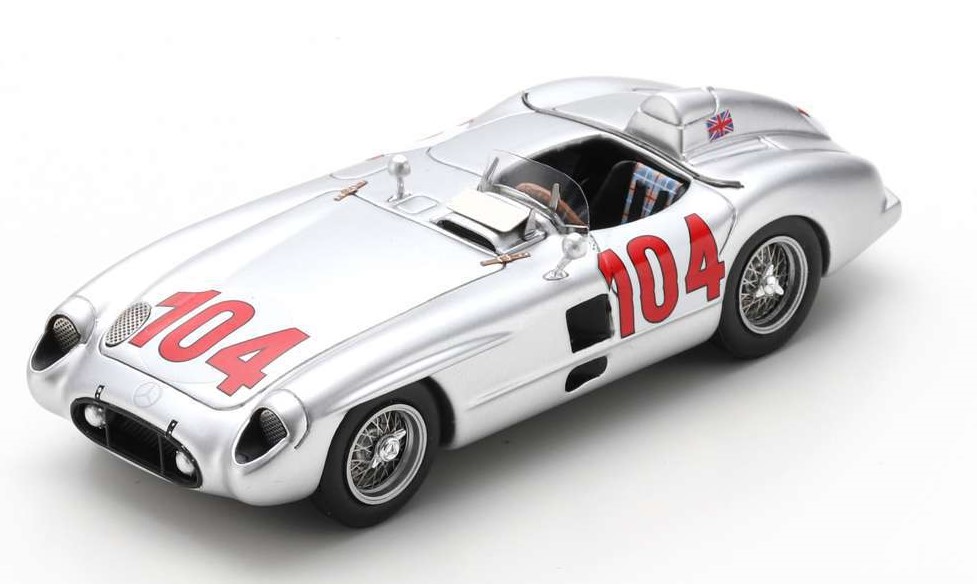 Spark: Mercedes 300SLR 1st Targa Florio 1955
Spark: Mercedes 300SLR 1st Targa Florio 1955
OK, that a wrap for another month. Unfortunately, no swap meets in June but collectors can still get their "fix" by emailing me their requirements and I can post their models, nationally and internationally. Until next month, happy collecting.
Formula One / Transporter
- 2020 Alfa Romeo Ferrari C39, K.Raikkonen (7) Turkish GP (Spark)
- 2020 Alpha Tauri Honda AT01, D.Kvyat (26) Austrian GP (Minichamps)
- 1966 BRM P261, I.Ireland (10) Mexican GP "Bernard White Racing" (Spark)
- 1961 Cooper Climax T53, M.Gregory (42) British GP (Spark)
- 1979 Ferrari 312 T4, G.Villeneuve (12) (GP Replicas)
- 2020 Haas Ferrari VF-20, K.Magnussen (20) Austrian GP (Minichamps)
- 1967 LDS Climax MK3 S.Tingle (18) South African GP (Spark)
- 1973 March Ford 731, H.Pescarolo (11) Spanish GP (Spark)
- 1973 March Ford 731, J.Hunt (27) 2nd US GP (Spark)
- 1970 McLaren Ford M14A, P.Gethin (6) 6th Canadian GP (Spark)
- 1972 McLaren Ford M19A, B.Redman (15) 5th Monaco GP (Spark)
- 2020 McLaren Renault MCL35, L.Norris (4) 3rd Austrian GP Ed.43 No.204 (Minichamps)
- 2020 Racing Point Mercedes RP20, S.Perez (11) Austrian GP (Minichamps)
- 2020 Renault R.S.20, D.Ricciardo (3) 3rd Eifel GP (Spark)
- 1973 Ford Transit, Lotus JPS Team van (Spark)
Le Mans / Sports Car
- 1938 Delahaye 135CS, Tremoulet/Chaboud (15) LM winner (Spark)
- 1988 Jaguar XJR-9, Lammers/Dumfries/Wallace (2) winner Le Mans (IXO)
- 1955 Mercedes Benz 300SLR, S.Moss/Collins (104) 1st Targa Florio (Spark)
Australian Race Series
- 2019 Mercedes-AMG GT3, Lowndes/Van Gisbergen/Whincup (888a) 12h Bathurst (Spark)
American Race Series
- 1971 Porsche 917K, Elford/Larrousse (3) 1st Sebring 12 hour (Spark)
After Thoughts: "The Great Designers - Maurice Phillipe." Despite his gallic-sounding name, Maurice Phillipe was a British aircraft and Formula One designer . Born on 30 April 1932, Phillippe won an apprenticeship with the De Havilland aircraft company and during his time there, helped develop the wing structures for the Comet 4 aircraft. While still with de Havilland, Phillipe built his own racing car in 1955, the MPS (Maurice Phillippe Special) and later worked collaboratively on building a front-engined Formula Junior car called the Delta. After leaving de Havilland, he became a development engineer for Ford, working on the Anglia engine while racing a Lotus 7 in 1963-64 during his spare time. Most likely it was Phillippe's design ability rather than his driving skills that prompted Lotus boss, Colin Chapman to ask him to head up the Lotus design team in 1965.
Lotus 1965 - 1972
Working with Chapman, Phillippe firstly redesigned the Lotus 39 after changes to the engine regulation made it unsuitable for Formula One. The modified Lotus 39 was allocated to Jim Clark to race in the 1966 Tasman Series and the car with its uncompetitive Coventry Climax 2.5 litre remained in Australia. Phillippe's next car was the BRM powered Lotus 43 for the 1966 season but the car was hampered by the heavy and unreliable engine. Nevertheless, Clark managed to win one race with the 43. Phillippe's next design was the classic Lotus 49 which served the team with great success from 1967 until 1970 using the Cosworth DFV 3-litre engine. Using a stressed-member drivetrain to reduce weight, the concept was later widely adopted by other teams. The 49 was also a test-bed for several racing car innovations, including the use of aerofoil wings first introduced at the 1968 Monaco GP. The Lotus 49 won 12 races over 4 seasons and netting one drivers championship (Hill 1968). In the interim Phillippe was involved in the design of Lotus 56 turbine cars with its distinctive wedge-shaped body for the 1967 Indy 500 and also experiments in four-wheel drive.
Phillippe's next success was the Lotus 72 introduced partway into the 1970 F1 season for Jochen Rindt. Rindt was killed in a qualifying crash at Monza driving the 72 with its wings removed but won the 1970 championship posthumously. The Lotus 72 was raced successfully until the end of 1975 winning 20 races for the team. However, in 1972 Phillippe left Lotus to work for Parnelli Jones.
Vel's Parnelli Jones Racing 1972 - 1976
Initially, the VPJ team formed in 1969, was concerned with participating in USAC racing, winning the Indy 500 in 1970 and 1971 with their VPJ Colt. After securing the services of Maurice Phillippe and Mario Andretti, team owner Parnelli Jones decided to move into Formula One at the end of 1974. The VPJ team mounted a full campaign in 1975 with the Phillippe designed Cosworth powered VPJ4. The VPJ4 scored 5 points in 1975 and 1 point in 1976 before Jones ended his brief affair with F1.
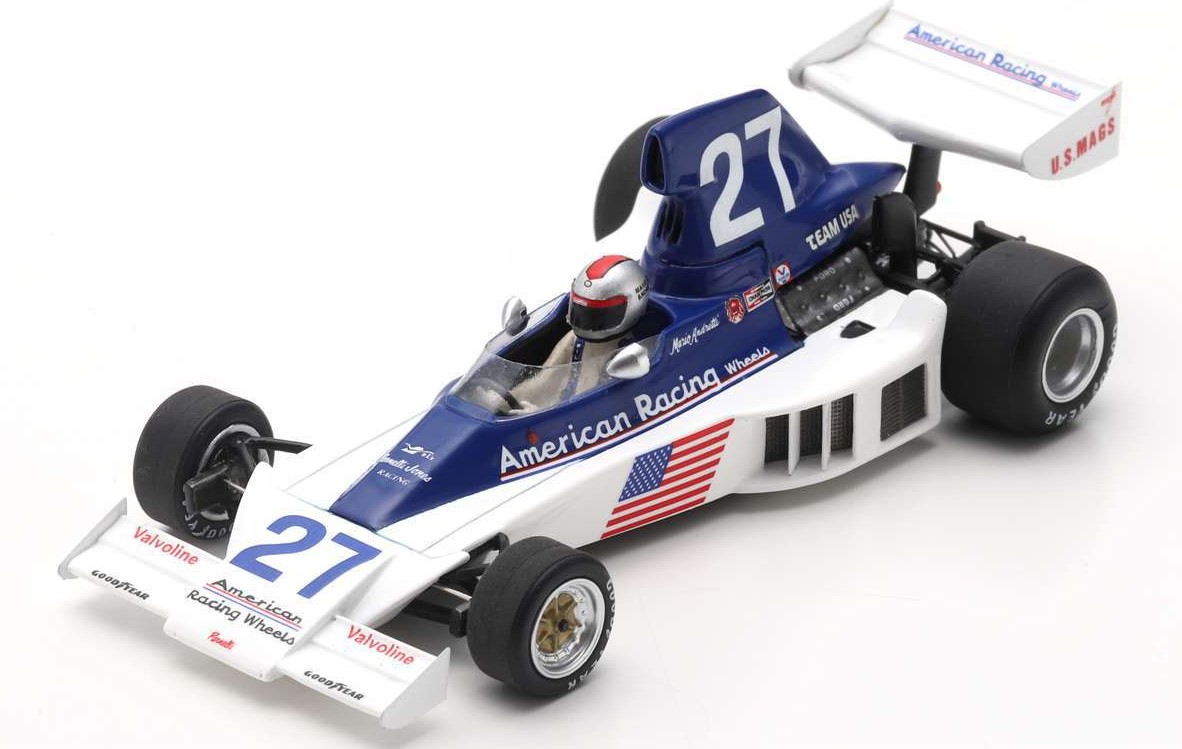 Spark: Parnelli Ford VPJ4 1976 Mario Andretti
Spark: Parnelli Ford VPJ4 1976 Mario Andretti
1976 - 1978
After leaving Parnelli Jones' team in 1976, Phillippe spent a couple of years working as a freelance designer before being hired in 1978 to replace Derek Gardner as chief designer at Tyrrell.
Tyrrell Racing 1978 - 1988
Phillippe's first design at Tyrrell was the 008 which was raced by Patrick Depailler and Didier Pironi. The team finished 4th in the Constructors Championship with the 008 chassis, winning one race at Monaco. The 1979 Tyrrell 009 was a ground-effect car but was not a great success. For the following season, Phillippe produced the 010 and due to financial constraints, the chassis ran in modified form for the 1981, 82 and 83 seasons; Alboreto winning two races with the 010. Phillippe's next new car did not make an appearance until 1984, however all the team results for that year were excluded due to rule infringements. Tyrrell were the last team to use the venerable Cosworth 3-Litre normally-aspirated engine but in 1985, the team switched to the Renault Turbo engine but the cars never delivered the results the team had hoped for. By the end of the 1988 season, Phillippe was replaced by Harvey Postlewaite.
 Partworks: Tyrrell Ford 008 1978 Depailler
Partworks: Tyrrell Ford 008 1978 Depailler
1988 - 1989
After leaving Tyrrell, Phillippe set up his own design consultancy business and designed the March-Alfa 89CE Indycar but he passed away on 5 June 1989 before the car ran for the first time.
New Additions: May 2021
Welcome to the update for May. As usual we start with some Covid update; the Sydney Model Auto Club, the organisers of the monthly model fair at Granville have announced the fair in May will not be proceeding. Apparently the state government's rules regarding church halls have remained unchanged. However, the Hawkesbury Model and Hobby Show will be going ahead later in the year on the weekend of 18th/19th of September, so pencil these dates into your diaries.
Quite a few models arrived in the post last month, hopefully one or two might find their way into your collection! Being spoilt for choices, it was hard to decide which models to highlight but being a Ferrari F1 fan the first model had to be the Ferrari SF1000 as raced at Ferrari's1000th GP. The "Tuscan" GP in 2020 was held at the Mugello circuit which is owned by Ferrari but surprisingly had never hosted a championship GP race. Fittingly, it was the first GP of the season to allow spectators, giving the devoted tifosi an opportunity to celebrate this milestone. Since F1's inaugural season in 1950, Ferrari had won 16 constructors' championships, 15 drivers' titles, 238 wins and 228 poles from 78 cars. Both SF1000 cars sported a deep burgundy colour which was the colour of the first Ferrari car built in 1947 - the 125S. As part of the celebrations, fans were treated to a demonstration run by Mick Schumacher driving the F2004 car in which his father took his seventh championship. The race itself was rather a disappointment for Ferrari with Leclerc only managing an 8th place while Vettel scrapped home in 10th. The Looksmart models are beautifully presented and definitely one for the Ferrari collectors.
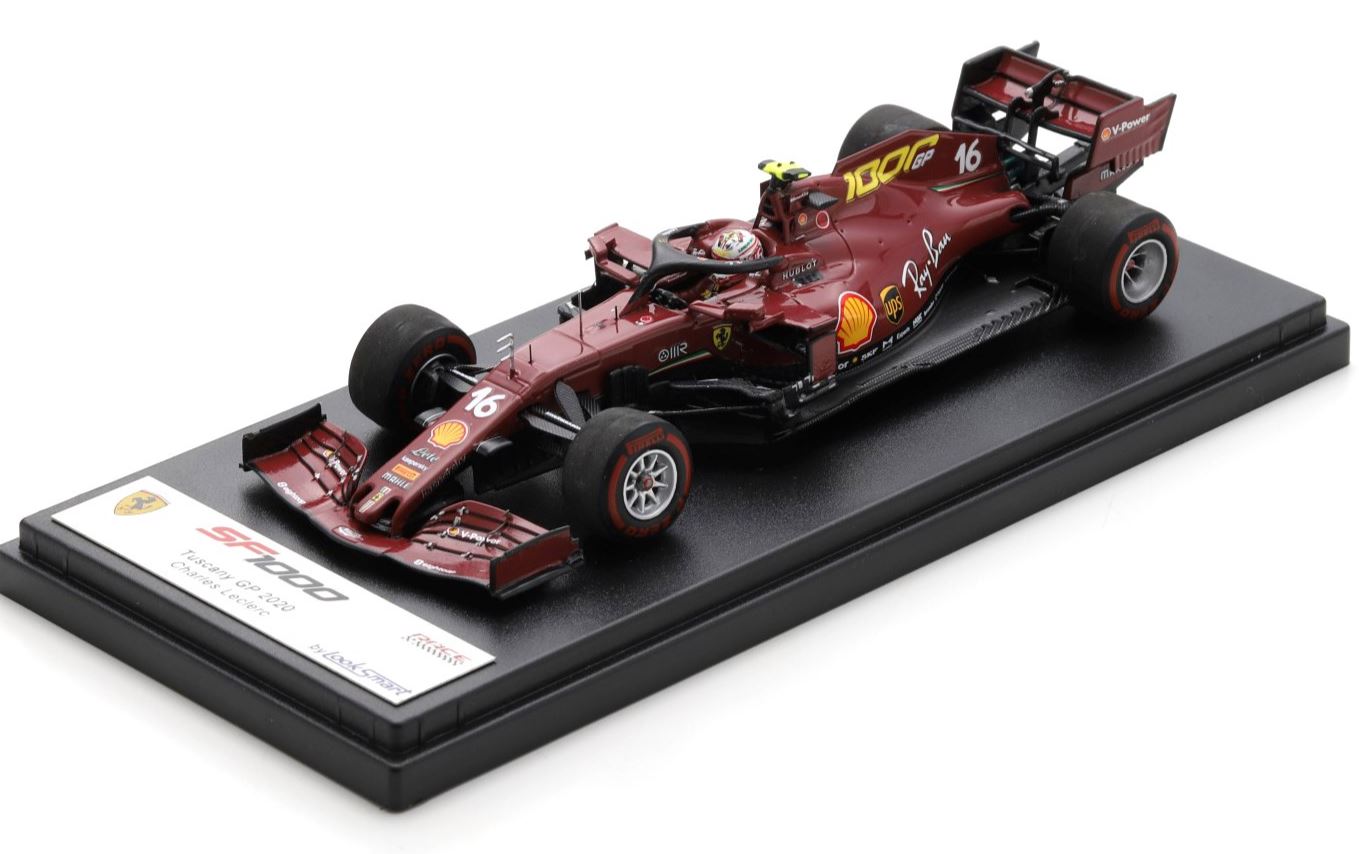 Looksmart: Ferrari SF1000 Tuscan GP Leclerc 2020
Looksmart: Ferrari SF1000 Tuscan GP Leclerc 2020
The Mirage family of race cars were built by JW Automotive Engineering (JWAE) and were the first to carry the now iconic blue and marigold colours of Gulf Oil. After the vice-president of Gulf Oil saw the potential of the GT40, he commissioned JWAE to build three lightweight versions of the GT40 which were to become the first of a line of Mirages. This first Mirage, the M1 was built and raced during the 1967 season and was a sports prototype based on the Ford GT40 and used the Ford V8 engine. Unlike the regular GT40's the M1 had a narrower roof, rounded tail and a more slab-sided bodywork. Although the bodywork was different, the chassis and nose section were identical to the GT40. The highlight of the M1's racing career was the win at the Spa-Francorchamps 1000km race. After losing one of the cars in an accident at the Nurburgring, the remaining two were entered in the 1967 Le Mans using the 305 (5-litre) engine but weren't able to compete with the GT40 MkIV and MkIIB with their larger 427 (7-litre) engines. Both M1's retired early with engine problems. The M1 project was rendered obsolete after one season when a 3-litre limit was declared for the Group 6 prototype class for 1968. Spark have produced both the Le Mans cars to their usual high standards.
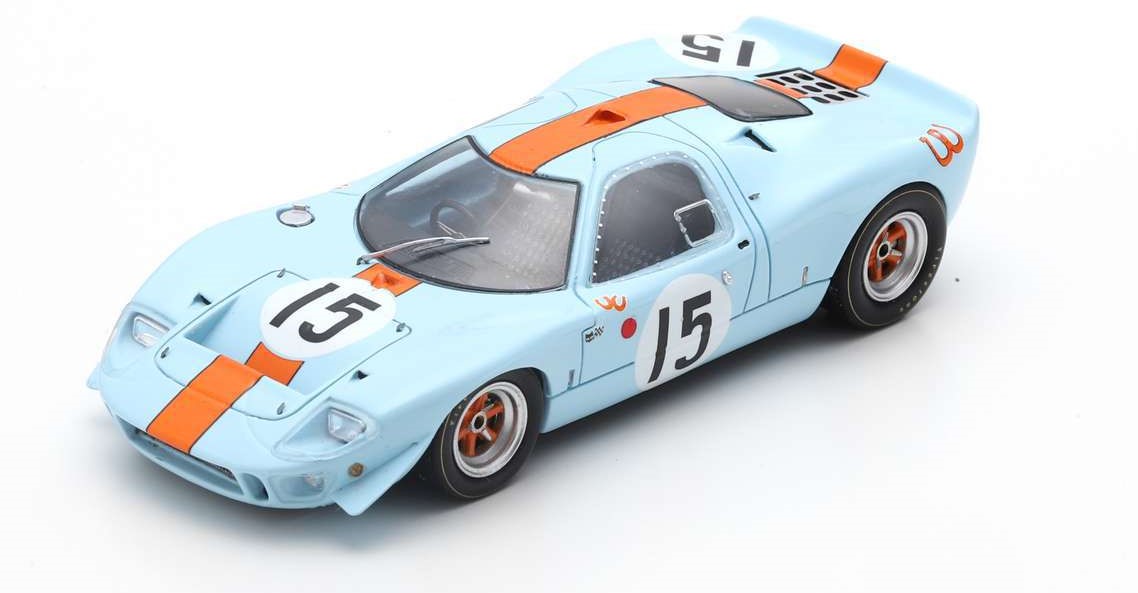 Spark: Mirage Ford M1 1967 Le Mans
Spark: Mirage Ford M1 1967 Le Mans
OK, that's it for another month. Thanks to all those who have supported me during these tough Covid times. Just a reminder, I will be attending the Collector Con event at the Penrith Valley Regional Sports Centre, 30 Herbert Street, Cambridge Park on 30 May. Hope to see you there. Until next month, happy collecting.
Formula One
- 2020 Alpha Tauri Honda AT01, P.Gasly (10) 1st Italian GP (Spark)
- 1983 Arrows Ford A6, A.Jones (30) Long Beach GP (Spark)
- 1982 Brabham BMW BT50, R.Patrese (2) 5th Swiss GP (Spark)
- 1969 BRM P138, J.Surtees (14) 5th Spanish GP (Spark)
- 1966 Cooper Maserati T81, J.Rindt (8) 3rd German GP (Spark)
- 2020 Ferrari SF1000, C.Leclerc (16) Tuscan GP (1000th Ferrari Race) (Looksmart)
- 2020 Ferrari SF1000, S.Vettel (5) Tuscan GP (1000th Ferrari Race) (Looksmart)
- 1975 Hesketh Ford 308, T.Palm (32) Swedish GP (Spark)
- 1995 Ligier Honda JS41, M.Brundle (25) 4th French GP (Spark)
- 1969 Lotus Ford 59B, R.Petersen (40) Grand Prix d'Albi F2 (Spark)
- 1967 Matra MS5, J-C Guenard (84) Coupe de Paris F3 Montlhery (Spark)
- 1969 Matra Ford MS80, J.Stewart (7) 1st Race of Champions (Spark)
- 2019 Mercedes AMG W10, L.Hamilton (44) 1st Monaco GP (Minichamps)
- 1979 Shadow Ford DN9, J.Lammers (17) Practice Monaco GP (Spark)
- 1971 Surtees Ford TS9, S.Posey (19) US GP (Spark)
- 1972 Surtees Ford TS9B, A.de Adamich (20) Argentine GP (Spark)
- 1972 Surtees Ford TS9B, T.Schenken (19) 5th Argentine GP (Spark)
Le Mans / Race Transporter
- Mercedes-Benz O 317, BMW Race Transporter in white (Schuco)
- 1962 Alfa Romeo Giulietta Sport, Sala/de Luca di Lizzano (39) 10th Le Mans (Spark)
- 2018 BMW M8 GTE, Tomczyk/Catsburg/Eng (81) Le Mans (TSM by Spark)
- 1960 Ferrari TR60, Gendebien/Frere (11) Le Mans winner (IXO)
- 1964 Ford GT40, Hill/McLaren (140) ADAC 1000km Nurburgring (Spark)
- 1963 Lola Ford Mk6 GT, Attwood/Hobbs (6) Le Mans (Spark)
- 1973 Matra Simca MS670B, Pescarolo/Larrousse (11) Winner Le Mans (Spark)
- 1991 Mazda 787B, Weidler/Herbert/Gachot (55) Le Mans Winner (Spark)
- 1967 Mirage Ford M1, D.Piper/D.Thompson (14) Le Mans (Spark)
- 1967 Mirage Ford M1, J.Ickx/B.Muir (15) Le Mans (Spark)
- 1997 Nissan R390 GT1, van de Poele/Suzuki/Patrese (22) Le Mans (Spark)
- 1993 Peugeot 905 Evo 1, G.Brabham/Bouchut/Helary (3) LM Winner (Spark)
- 2019 Rebellion Gibson R13, Jani/Lotterer/Senna (1) 4th Le Mans (Spark)
Rally Car
- 1986 Audi Sport Quattro S1 E2, Rohrl/Geistdorfer (2) Rally Monte Carlo (Spark)
Australian Race Series
- 2019 Lamborghini Huracan GT3, Deitz/McConville/Westwood (6A) Bathurst 12h (Spark)
- 2020 Lamborghini Huracan GT3, Deitz/McConville/Westwood (6) Bathurst 12h (Spark)
- 2018 Porsche 911 GT3 R, Pappas/Bleekemolen/Lieb (540) 3rd Bathurst 12h (Spark)
- 2020 Porsche 911 GT3 R, Werner/Cairoli/Preining (912) 7th Bathurst 12h (Spark)
- 2020 Porsche 911 GT3 R, Bamber/Lowndes/Vanthoor (1) 9th Bathurst 12h (Spark)
- 2020 Porsche 911 GT3 R, Calvert-Jones/Dumas/Evans (12) 11th Bathurst 12h (Spark)
American Race Series
- 1976 BMW 3.5 CSL, Quester/Petersen (10) 5th Watkins Glen 6 hr (Spark)
- 2019 BMW M8 GTE, Farfus/De Phillippi/Eng/Herta (25) 1st GTLM Daytona (TSM)
- 2020 Cadillac DPi-V.R, Dixon/Kobayashi/Briscoe (10) 1st Daytona 24hr (Spark)
- 1962 Ferrari 250 TR61, Bonnier/Bianchi (23) 1st Sebring 12 hr (Looksmart)
Misc Scale
- 2018 Porsche 911 RSR, Christensen/Estre/Vanthoor (92) 1st LMGTE-Pro (1:64 Spark)
Road Car
- 1987 Porsche 928 Studie H50 concept car in dark red metallic (Neo)
After Thoughts: "The 60th Birthday of a British Icon." In March 1961 a sports car rolled off the production line in Coventry for the first time and into the history books to become the most famous British sports car of all time. On its release, Enzo Ferrari called it "the most beautiful car ever made" and the Jaguar E-Type was introduced to the world.
The E-Type was clearly influenced by the three-times Le Mans winning D-Type with its smooth, flowing lines, but it was with the lesser known E1A prototype of 1957 that the E-Type story really begins. The E1A was smaller than the final production E-Type and had a 2.4-litre engine. Subsequent refinements saw the dimensions increase and its final shape defined. The size grew as Jaguar recognised the importance of the American market and the engine also increased to 3.8-litres. The original E1A prototype was eventually scrapped by the factory in 1958 when extensive trials were completed. A second prototype, the E2A was developed purely as a one-off racing car and raced at Le Mans in 1960 by the Briggs Cunningham team. After failing to finish, the E2A was shipped to America to continue racing but was returned to England in 1961 to be used as a test vehicle. This one-off E2A survived and was sold at auction in 2012 for US$4,957,000.
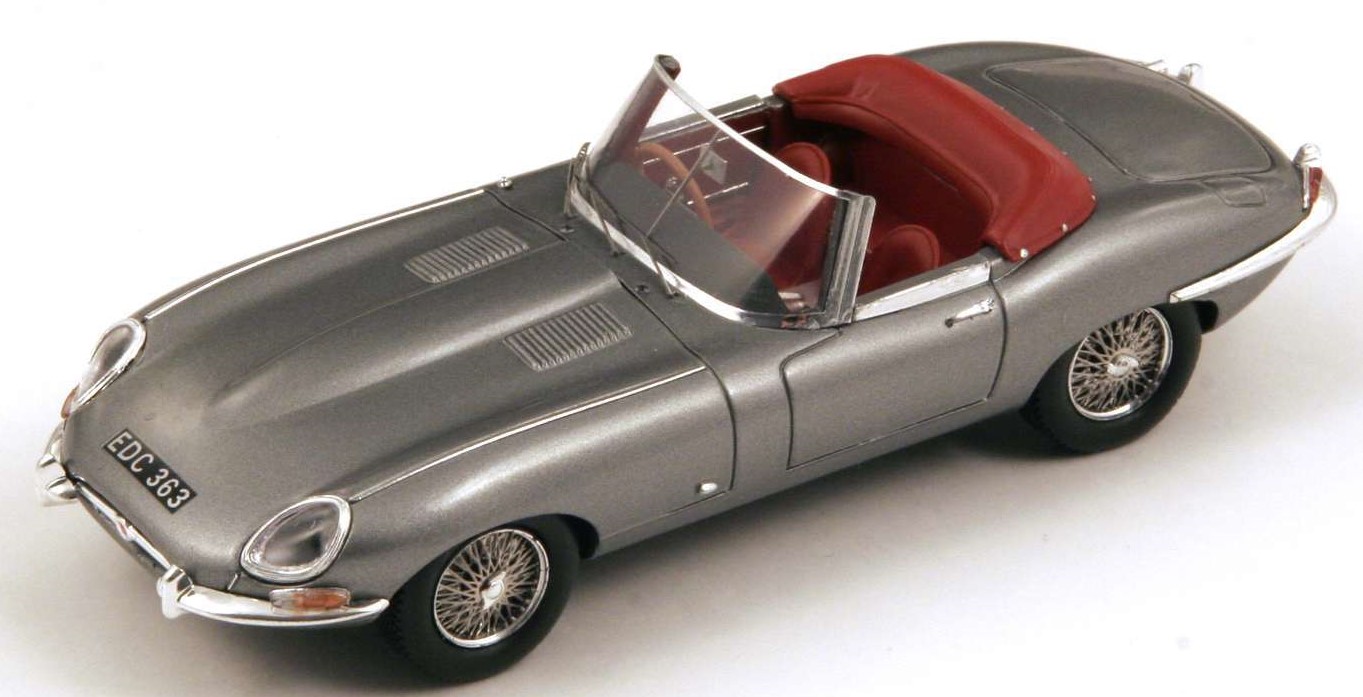 Spark: Jaguar E-Type S1 Roadster
Spark: Jaguar E-Type S1 Roadster
By the time the E-Type was unveiled in 1961 with its 265bhp engine and four-speed manual gearbox, it was claimed to have a top speed on 150mph. The was astounding when 70mph was the top speed of most family cars at that time. The 3.8-litre engine was increased to 4.2-litres in 1964. Later models of the E-Type were designated "Series 2" (1968-71) and "Series 3" (1971-74).
The E-Type was far more than just a beautiful performance road car; the car also had an impressive history as a race car. During its initial design, it was created to be no more than an exceptional road car and was never expected to take to the track. As the demand for the E-Type road car increased and with the factory struggling to keep up with demand, there was neither the time or the will to tweak the E-Type for racing. It was only when the FIA created a new GT category in 1961 for production sports cars that Jaguar began to be tempted to race the car. In its first race after just a month of its release, the E-Type race car was driven by a young Graham Hill to victory at Oulton Park against the Aston Martin DB4 and the Ferrari 250GT. The factory then decided to build an ultra-lightweight E-Type by using aluminium components and stripping down the interior to save weight. On British tracks, the E-Type won numerous races being ideally suited to the tight twisty tracks such as Goodwood and Snetterton, however on the larger and faster circuits of Europe, the E-Type was regularly beaten. American Briggs Cunningham, who had raced Jaguar's E2A prototype at Le Mans in 1960, gave the E-Type its Le Mans debut in 1962. Teamed with Roy Salvadori, Cunningham finished fourth while Ferrari's dominated the podium.
The E-Type may not have been Jaguar's most successful race car, but its legacy was to be Jaguar's most popular.
 Vale: Johnny Dumfries (26 April 1958 - 22 March 2021)
Vale: Johnny Dumfries (26 April 1958 - 22 March 2021)
New Additions: April 2021
Welcome to the April monthly update which will be a short and sweet one. Firstly, a Covid update; restrictions have eased even further from last month and we seem to be almost back to normal despite a slow vaccine roll-out. Mask wearing is now recommended but not mandatory in all situations. However the Sydney Model Auto Club who run the monthly model fair at Granville have just announced the April fair will NOT be held. The decision was made by the church who run the school where the fair is held. Meanwhile, a couple of other collectibles fairs have already been run successfully, one of them is the Collector Con held near Penrith. I've never attended the Collector Con before but I've decided to book some tables for the 30 May show (see Swap Meets for venue details). Also on a positive note, the organisers of the Shannons Classic at Eastern Creek have taken the punt that things will be normal by August and have confirmed the show will be going ahead on 15 August. I will, of course be attending. Only a few new additions this month but a big shipment of Spark models are due in a couple weeks. Finally, I'd like to thank all those who have supported me during these challenging times when model car collecting hasn't been a high priority. Until next month, happy collecting.
Formula One
- 1969 McLaren Ford M7B, B.McLaren (6) 5th South African GP (Spark)
- 1977 McLaren Ford M23, E.de Villota (36) Spain GP "Iberia Airlines Team" (Spark)
- 1981 McLaren Ford M29, A.de Cesaris (8) Long Beach GP (Spark)
American Race Series
- 1990 Lola Chevrolet T91/00, A.Luyendyk (30) 1st Indy 500 "Domino's" (Replicarz)
- 1940 Maserati 8CTF, LeBeque (49) Indy 500 "Lor Schell Special" (Replicarz)
- 1941 Maserati 8CTF, Duke Nalon (17) Indy 500 'Elgin Piston Pin Special' (Replicarz)
Le Mans / Sportscar Racing
- 2019 Porsche 911 GT3 R, S.Grove/B.Grove (4) 3rd FIA GT Cup Vallelunga (Spark)
 Spark: Team Australia Porsche 911 GT Cup 2019
Spark: Team Australia Porsche 911 GT Cup 2019
After Thoughts: "The Forgotten F1 Circuits Series #1 - East London." The Kyalami circuit is synonymous with the South African GP, having hosted World Championship races from 1967 through to 1985 and then two races in 1992 and 93. What is not so well known was the South African GP was also held at the Prince George Circuit at East London from 1962-63 and in 1965.
The Prince George Circuit is located in East London in the Eastern Cape Province of South Africa and it hosted the first non-championship South African GP in 1934 . The original circuit was 23.4 kilometres long and was run on streets through different populated areas with the start/finish straight running along the sea shore. In 1936 the circuit was shortened to 17.7 kilometres and in 1959 to meet Formula One regulations, the track was further shortened to 3.9 km. The circuit can proudly claim to be the birthplace of South African motorsports; South Africa's only World Champion, Jody Scheckter started his career at this circuit. The first South African GP in 1934 attracted 65,000 spectators and 18 drivers and was held over 6 laps of the 24.6 km circuit. It was won by W. Straight, an American Millionaire sportsman who raced his Maserati 8CM 3.0L. The race wasn't held the following year but returned in 1936 through to 1939; racing curtailed only with the onset of World War 2. Formula 1 racing would not return until 1960 albeit still with non-championship status.
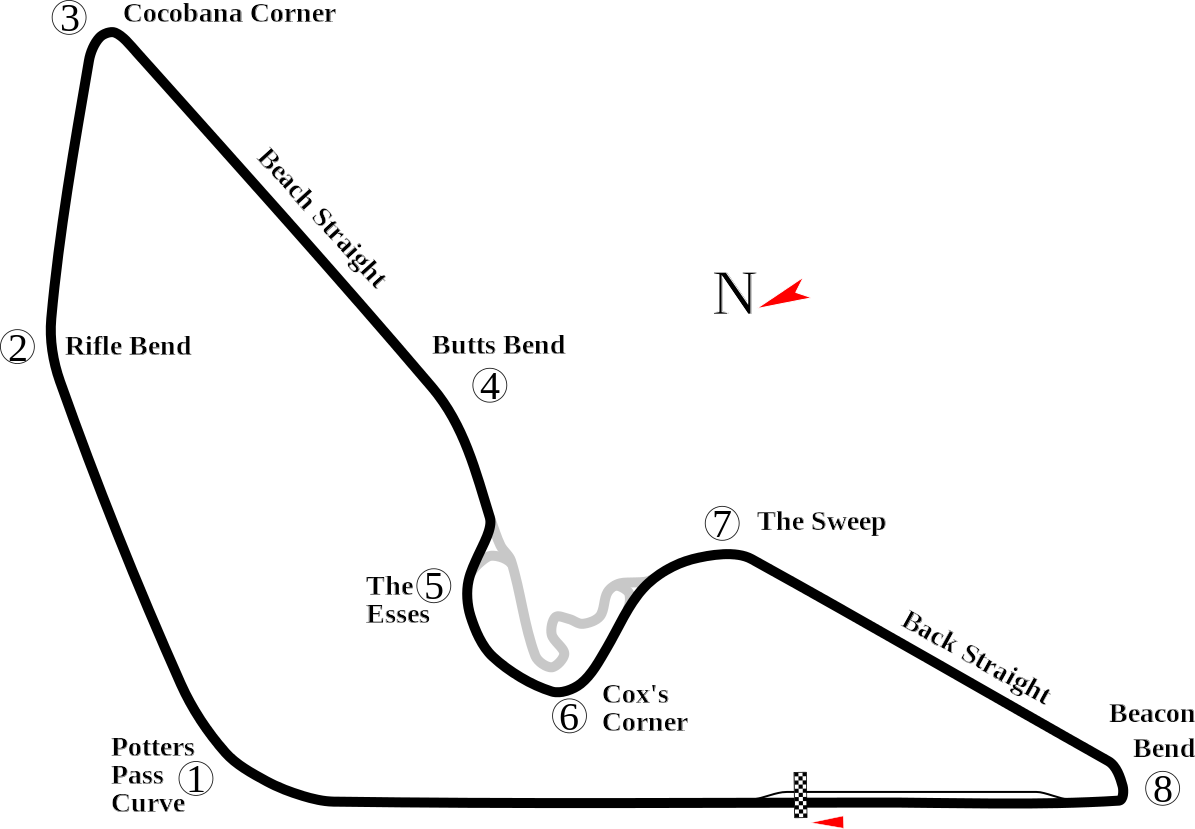 1959 East London circuit layout
1959 East London circuit layout
In 1960 with the boomerang-shaped circuit now at 3.9 km., Belgian Paul Frere won the 60 lap GP in his Cooper-Climax with Stirling Moss in 2nd in a Borgward powered Cooper. A second South African GP was held later that year which was won by Moss in a Porsche. Much like the Tasman Series in Australia/NZ the South African GP was held in the European winter which allowed a host of star drivers and their cars to attend. So, illustrious drivers such as Jim Clark, Graham Hill, Jack Brabham, Jo Bonnier and Masten Gregory lined up against a host of local drivers such as Tony Maggs and Rhodesians John Love and Sam Tingle.
Finally, in 1962 the East London South African GP became an official World Championship race and the 82 lap race was won by Graham Hill in a BRM. The following year, the South African GP was the tenth and final race in the Championship and the 85 lap race was won from pole position by Jim Clark in a works Lotus-Climax. The GP wasn't held in 1964 but returned to the calendar in 1965 where Jim Clark was again victorious in his Lotus-Climax. In 1966, the GP reverted to non-championship status and it would be the last time the circuit would host a F1 race. Having hosted three world championship races, the East London circuit, now deemed to be too small for Formula One cars relinquished the South African GP to the Kyalami Circuit.
 1962 South African GP Program, race held post-Christmas!!!
1962 South African GP Program, race held post-Christmas!!!
Today, the circuit still hosts a variety on motorsport events, including South Africa's top Touring Car category and motorcycle events. Blessed with fairly large run-off areas, the circuit is relatively safe despite the lack of safety barriers around it's perimeter. Happily, the local motorsport club agreed to a 20-year lease of the circuit from the local government in 2014 and a multi-million dollar renovation program has prevented the circuit from disappearing permanently into the history books.
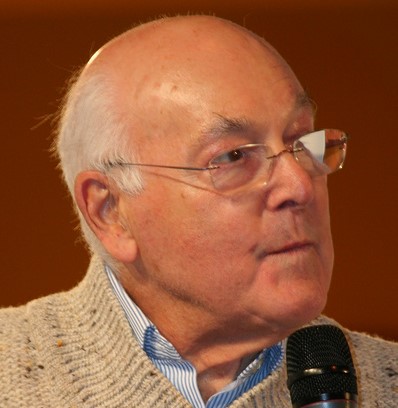 Vale: Murray Walker OBE (10 October 1923 – 13 March 2021)
Vale: Murray Walker OBE (10 October 1923 – 13 March 2021)
New Additions: March 2021
Welcome to another monthly update. Again, we start with some Covid news; Sydney has recorded over 40 days without any locally acquired cases, so restrictions have ease substantially. Nevertheless, the organisers of the Granville Friday night model fair have decided to cancel the March fair and are looking at April for a restart. Also, no news from the organiser of the Collectormania Fair or any of the other car shows yet. So, what are the model highlights for March?
Graeme Lawrence was a driver who "lived the dream" in motor racing. From humble beginnings, this New Zealander ended up racing against legends like Jim Clark, Graham Hill, Jackie Stewart and Jochen Rindt. The turning point in Lawrence's racing career came in 1968. After campaigning a Brabham BT6 in local championships for a few years, he phoned his friend from his school days, Bruce McLaren to secure a McLaren M4A F2 car for the NZ Gold Star series. But McLaren instead offered him the opportunity to race for his team in the European F2 Championship, the deal contingent upon Lawrence supplying a 1600 Cosworth FVA engine and a mechanic. So Lawrence found himself in Europe and competing in the fateful race at Hockenheim in which Jim Clark lost his life. Unfortunately, Lawrence's F2 campaign was short-lived as the car was uncompetitive and he was replaced by Frank Gardner after 4 races.
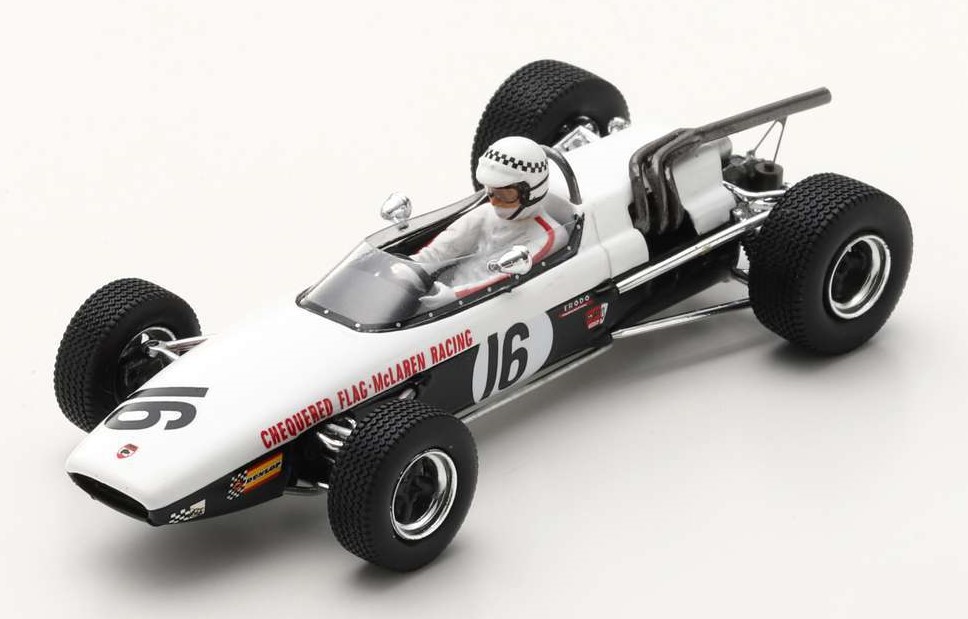 Spark: McLaren M4A F2 1968 G.Lawrence
Spark: McLaren M4A F2 1968 G.Lawrence
The Ford Motor Company first introduced the Model 40 in 1932. When the updated Model 40 was launched in 1933, the revisions were substantial. Compared to the 1932 model, the 1933 cars had a stretched wheelbase and looked much more flowing, reflecting the company's shift to more streamlined cars. The new design with pointed grille along with the V8 engine was universally applauded by custmers. Ford produced vehicles that weighed less than a ton, meaning that with the V8 engine underneath, these vehicles were quicker than most anything else on the road. The 1933 Model 40 line consisted of 10 unique body styles. This Esval Ford Model 40 (top-down) is a limited edition model of 250 pieces.
 Esval: 1933 Ford Model 40 Top Down
Esval: 1933 Ford Model 40 Top Down
OK, that's a wrap for another month. No model fairs in March, however, we can look forward to the start of the F1 season on 28 March. Until next month, happy collecting.
Formula One
- 1969 Brabham Ford BT24, S.Moser (17) Monaco GP (Spark)
- 1973 Brabham Ford BT42, A.de Adamich (9) British GP (Spark)
- 1986 Brabham BMW BT55, R.Patrese (7) Monaco GP "Olivetti" (Spark)
- 1980 Ensign Ford N180, T.Needell (14) Belgium GP (Spark)
- 1974 Ferrari 312 B3, N.Lauda (12) (GP Replicas)
- 1985 Ferrari 156/85, R.Arnoux (28) (GP Replicas)
- 1956 Gordini T32, R.Manzon (10) Italian GP (Spark)
- 1976-79 Lotus Team JPS Set. M.Andretti - Type 77, 78, 79 Signature Series (TSM)
- 1966 Matra Simca M5S, J.Stewart (24) F2 De Pau GP (Spark)
- 1968 McLaren Ford M4A, G.Lawrence (16) F2 De Pau GP (Spark)
- 1979 Shadow Ford DN9, J.Lammers (17) Argentinian GP (Spark)
- 1975 Williams Ford FW04, L.Lombardi (20) US GP (Spark)
- 1976 Williams Ford FW05, W.Brown (21) USA GP (Walter Wolf Racing) (Spark)
American Race Series
- 2018 Cadillac DPi-V.R, Albuquerque/Barbosa/Fittipaldi (5) 1st 24 hours Daytona (Spark)
- 1953 Cunningham C4-R, Fitch/Walters (57) 1st Sebring 12 Hour (Spark)
- 1963 Ford Galaxie, D.Gurney (0) 5th Daytona 500 (Spark)
Road Cars
- 1956 Chevrolet 150 Handyman Panel, 2 door panel delivery in blue (Esval)
- 1961 Cisitalia DF85, Coupe by Fissore in red (Esval)
- 1934 Duesenberg Sedan, Sedan by A.H. Walker in grey (Open Lights) (Esval)
- 1933 Ford V8 Model 40 Roadster, Top down roadster in black (Esval)
After Thoughts: "The Unheralded Drivers Series #4 - Rolf Stommelen." German driver Rolf Stommelen is regarded as one of the best endurance sport car racing driver of the 1960s, 1970s and early 1980s. Born on 11 July 1943 in Siegen, Germany, the young Stommelen was not particularly gifted academically but gained a technical certificate which landed him an apprenticeship with Cologne's main VW-Porsche dealership. Stommelen's father owned a successful car workshop and through his connections, was able to purchase a Porsche 904 GTS in 1964 for his son to campaign in national air field races and hill climbs. Stommelen's results in these events brought him to the attention of Porsche's racing director and through his patronage, Rolf was invited to race at Le Mans with a private Porsche team in 1965; his first outing ending in a DNF after two hours. The following year, he'd earnt a place on the works team for Le Mans in a Porsche 906 where he and his co-driver won the 2-litre class and finished seventh overall. Following this success, Stommelen became a professional race driver for the remainder of his life.
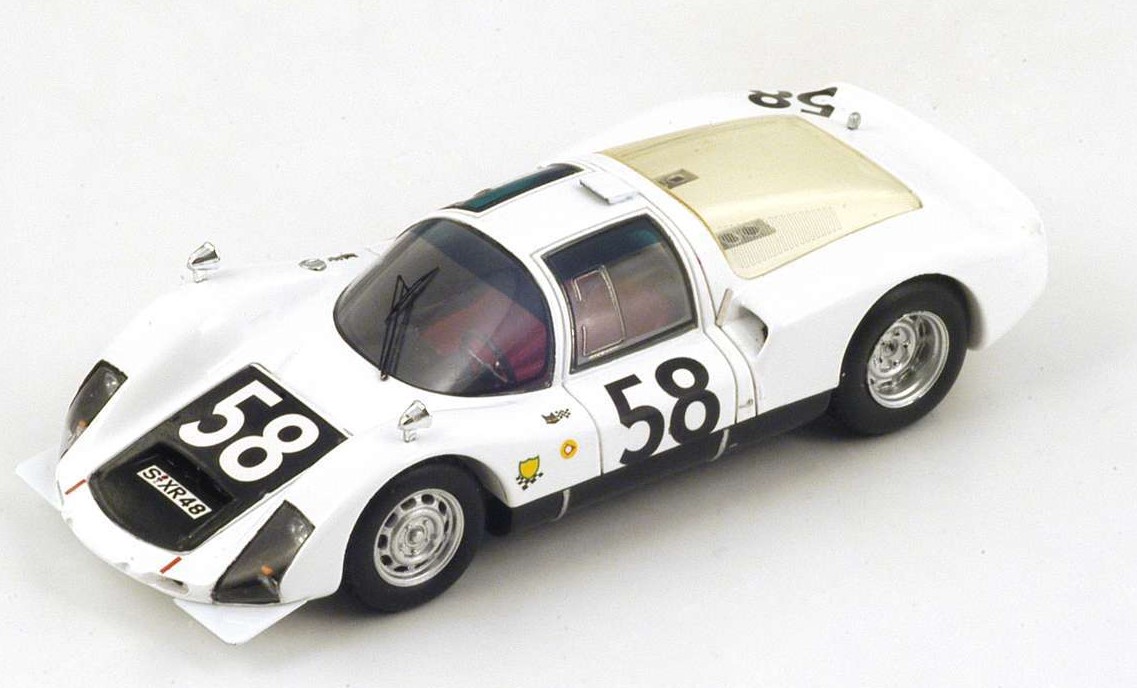 Spark: Porsche 906/6L Le Mans 1966 Stommelen
Spark: Porsche 906/6L Le Mans 1966 Stommelen
By the late 1960's, Stommelen had become Germany's leading sports car driver, racing works Porsches exclusively. At the Le Mans 24-hour race, Stommelen finished 3rd in 1968 and won pole position with the fast but unpredictable 917 in 1969 where he became the first driver to exceed 350 kph on the Mulsanne Straight. For the 1970 season, Porsche entrusted its racing effort to the John Wyer organisation and a second team would be managed by Porsche Salzburg with Martini sponsorship while Porsche managed the development of the 917. Surprisingly, Stommelen was not on the driving roster for either team. Some believe Stommelen's outspokenness was his downfall; he wasn't very diplomatic when it came to criticism of the cars he drove and that upset many people in the Porsche hierarchy so for 1970 he had to look elsewhere for a drive. He turned to the Autodelta team which ran the works Alfa Romeo effort. But as Germany's foremost driver, there was pressure on him to enter Formula 1.
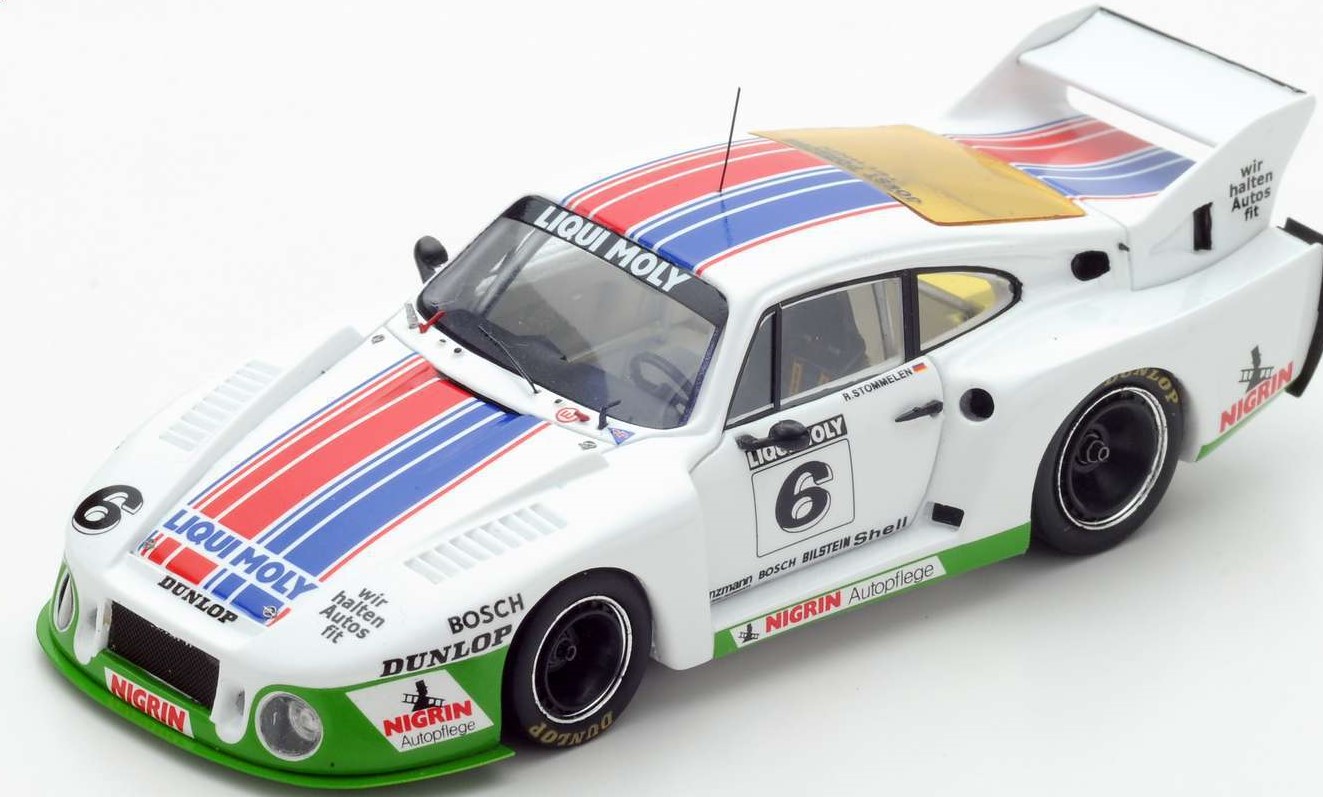 Spark: Porsche 935 1st Zolder DRM 1980
Spark: Porsche 935 1st Zolder DRM 1980
Stommelen signed up with the Brabham F1 team for 1970 driving alongside team principal, Jack Brabham. Stommelen enjoyed his most successful year in F1 driving the Brabham Ford BT33 where he finished three races in 5th place and scored his first and only podium finish, a 3rd place at the Austrian GP. At the age of 44, Jack Brabham decided to retire from F1 at the end of 1970 and the Brabham team preferred the promising Australian driver Tim Schenken to partner Graham Hill so Stommelen joined the Surtees team. His year at Surtees was a disappointment, netting a sixth and fifth place finish and his F1 career was in freefall. He could only get occasional drives with mediocre teams (Eifelland, Embassy, RAM, Hesketh and Arrows) before retiring from F1 at the end of 1978. The lowest point of his F1 career was at the 1975 Spanish GP where the rear wing of his Embassy Hill broke and his out-of-control car crashed into the crowd, killing five spectators and severely injuring himself.
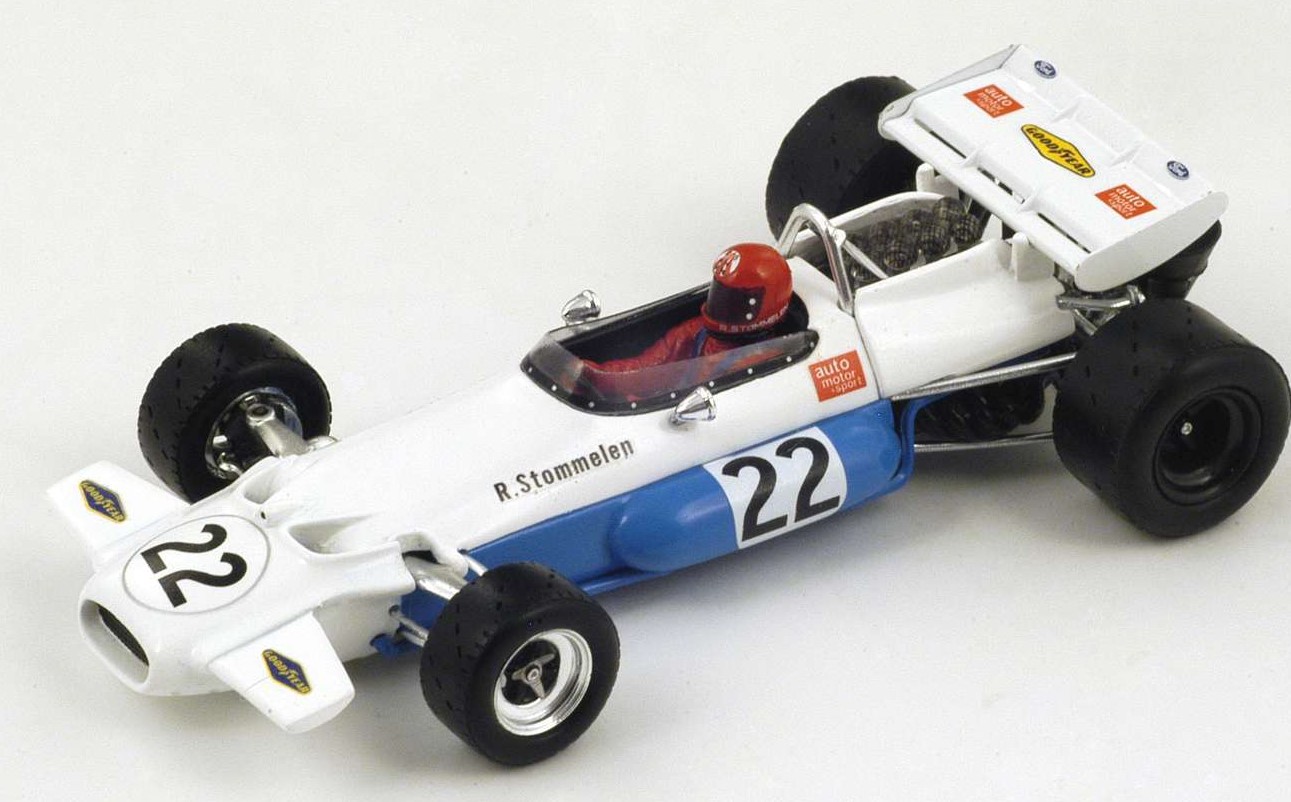 Spark: Brabham Ford BT33 1970 Stommelen
Spark: Brabham Ford BT33 1970 Stommelen
While his F1 foray was a disappointment, his sports and production car career was outstanding. He had won the 24 Hours of Daytona four times (1968, 78, 80 and 82) and the Targa Florio in 1967. In 1983, John Fitzpatrick asked his good friend, Stommelen to drive his low-downforce Joest-built "Moby Dick" Porsche 935 at the 6-hour LA Times Grand Prix at the Riverside International Raceway. During Stommelen's second stint, he had to swerve to avoid a backmarker and half spun backwards into a barrier. Unaware he'd damaged the rear-wing, the wing failed while travelling at 310 kph; the car became uncontrollable, slammed against a concrete wall, somersaulted and caught fire. He died on the way to hospital, he was 39-years old. Rolf Stommelen would forever be remembered as a driver for all circumstances.
New Additions: February 2021
Welcome to the February update; wow, already a month into the new year. Firstly some COVID news, the organisers of the monthly Granville Model Toy fair have officially cancelled the February show so it's a month-by-month review of the large gathering rules as they are released by the State government. No news yet from the organiser of the Collectormania Fair; we are still in an absolute state of flux. OK, I received several big deliveries in January, mainly F1 so I'm hoping there's something you'll find of interest. There is a couple of models I'd like to highlight ...
Birabongse Bhanudej Bhanubandh, thankfully better known as Prince Bira of Siam or by his racing name, B. Bira was a member of the Thai royal family who raced in Formula One from 1950 to 1954. Bira's F1 career began with racing a Maserati 4CLT/48 in 1950 and 1951 before joining the Gordini team for the 1952 season. The following year, Bira joined the Connaught team driving the Lea-Francis powered Type A Connaught. For the 1953 French GP (the subject of the model released by Spark), Bira qualified in 11th, ahead of the other two team Connaughts and only out-qualified by the dominant Ferraris and Maseratis. Bira was unfortunately forced to retire mid-race in his first race for Connaught. Bira entered in two more races for Connaught that year with a best place finish of 7th
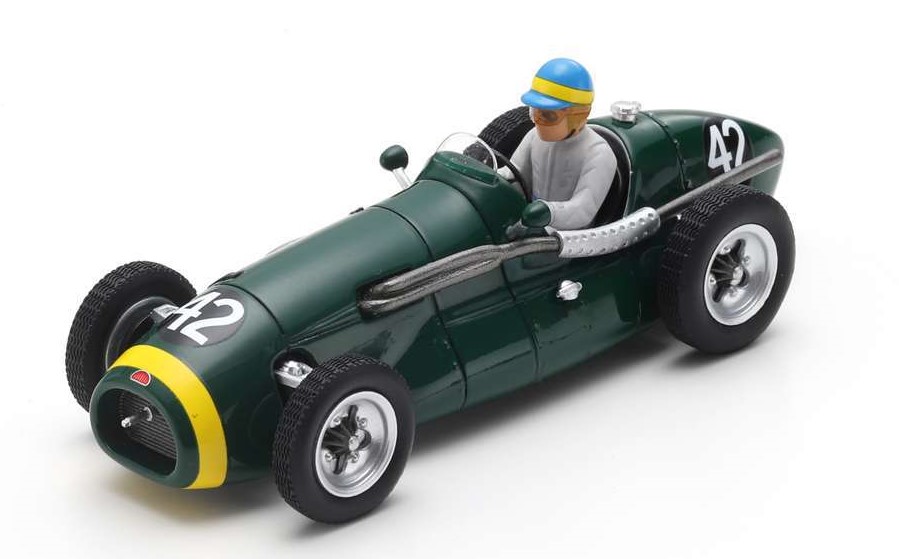 Spark S7243: Connaught A 1953 B.Bira French GP
Spark S7243: Connaught A 1953 B.Bira French GP
The Volkswagen ID.R is truly a remarkable, fully-electric vehicle. The ID.R currently holds the records on Pikes Peak (USA), the Goodwood Festival of Speed (UK), the electric lap record on the Nurburgring-Nordschleife (Germany) and on 2 September 2019 set the fastest time for an ascent of Tianmen Mountain in China. The 10.906-kilometre Tianmen Shan Big Gate Road is a true challenge with 99 hairpins, short sprints, fast winding sections reaching speeds of 230 kph and hard braking in extremely narrow tunnels to reach the end through the Heaven's Gate, a 131-metre natural arch. Roman Dumas overcame all these challenges setting a new record of 7:38.585 minutes with the 500 kW powered ID.R. Although an official fastest time for racing cars did not exist prior to this record attempt, it's hard to think the record will be bettered any time soon.
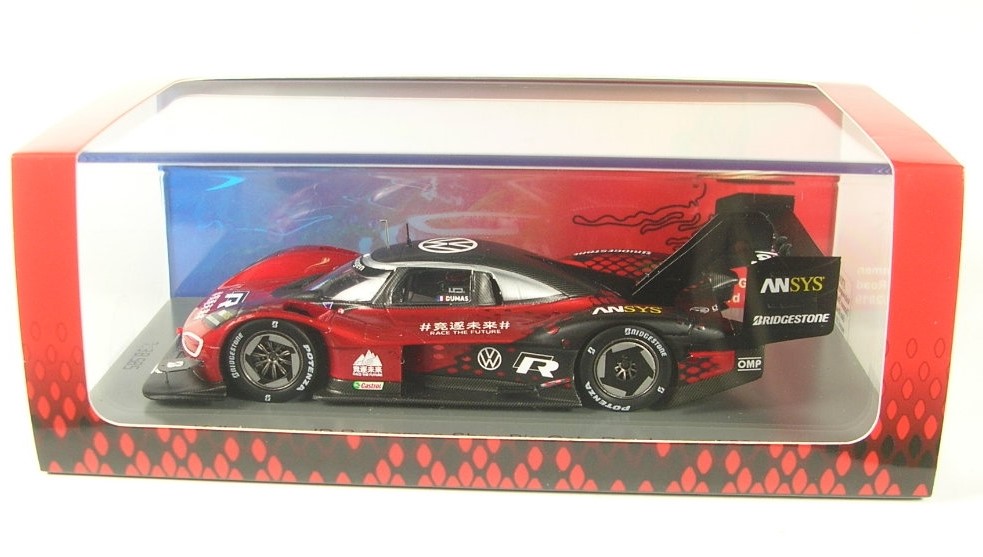 Spark S7830: Volkswagen ID.R Tianmen Mountain record 2019
Spark S7830: Volkswagen ID.R Tianmen Mountain record 2019
So, no model fairs for February but remember you can still purchase models by mail order. Just let me know what you're interested in and I'll give you a quote for postage or if in Sydney, we can meet up somewhere mutually convenient. Until next month, happy collecting.
Formula One
- 1992 Andrea Moda Judd S921, P.McCathy (35) DNPQ Monaco GP (Spark)
- 1966 Brabham Repco BT19, J.Brabham (16) 1st Dutch GP (Spark)
- 1967 Brabham Repco BT24, J.Brabham (16) Practice Italian GP (Spark)
- 1979 Brabham Alfa BT48, N.Piquet (6) Monaco GP (Spark)
- 1968 BRM P133, P.Rodriguez (11) 2nd Belgian GP (Spark)
- 1968 BRM P126, M.Spence (12) Race of Champions (Spark)
- 1972 BRM P180, H.Ganley (19) Monaco GP (Spark)
- 1972 BRM P180, B.Redman (15) US GP (Spark)
- 1953 Connaught A, J.Claes (48) French GP (Spark)
- 1953 Connaught A, Prince Bira (42) French GP (Spark)
- 1966 Cooper Maserati T81, C.Amon (8) 8th French GP (Spark)
- 1967 Eagle Weslake T1G, D.Gurney (36) 1st Belgium GP (Spark)
- 1979 Ensign Ford N179, D.Daly (22) Long Beach US GP (Spark)
- 1971 Ferrari 312 B2, C.Regazzoni (5) British GP (Looksmart)
- 1971 Ferrari 312 B2, M.Andretti (5) German GP (Looksmart)
- 1982 Ligier Matra JS19, J.Laffite (26) Monaco GP (Spark)
- 1967 Lola BMW T100, J.Siffert (20) GP d'Albi F2 (Spark)
- 1965 Lotus Climax 33, J.Clark (1) 1st German GP (Spark)
- 1969 Matra MS11-12, J.Stewart Albi Test with MS12 engine (Spark)
- 1967 McLaren Ford M4A, B.McLaren (24) GP de Rouen F2 (Spark)
- 1990 McLaren Honda MP4/5B, A.Senna (27) Elevated Nose Cone Test (Minichamps)
- 2020 Mercedes AMG W11, L.Hamilton (44) 1st Styrian GP (Spark)
- 1962 Porsche 804, J.Bonnier (18) 6th Italian GP (Spark)
- 2016 Red Bull Tag Heuer RB12, D.Ricciardo (3) Austrian GP w/ standing driver (Minichamps)
- 2020 Renault R.S.20, D.Ricciardo (3) 8th Styrian GP (Spark)
- 1975 Williams Ford FW, A.Merzario (20) Brazilian GP (Spark)
American Race Series
- 2019 Mazda RT24-P, Jarvis/Nunez (77) 1st IMSA Mosport (TSM)
Le Mans
- 1960 Aston Martin DBR1, J.Clark/R.Salvadori (7) 3rd Le Mans (Spark)
- 1973 BMW 3.0 CSL, N.Lauda (28) 1st Gr.2 Coupes de Spa (Spark)
- 1970 Porsche 908/03, Rodriguez/Kinnunen (40) 2nd Targa Florio (Spark)
- 1970 Porsche 908/03, Elford/Herrmann (20) Targa Florio (Spark)
- 1970 Porsche 917, Elford/Ahrens (25) Pole Position Le Mans (Spark)
- 1986 Porsche 962C, Gartner/van der Merwe/Takahashi (10) Le Mans (Spark)
- 2019 Porsche 911 GT3 R, K.Estre (912) GT World Cup Macau (Spark)
- 2019 Porsche 911 GT3 R, A.Imperatori (911) GT World Cup Macau (Spark)
- 2019 Porsche 935/19, (70) "Martini" livery (Spark)
- 2019 Porsche 935/19, (8) "Mentos" livery (Spark)
- 1987 Sauber Mercedes C9, Thackwell/Pescarolo (61) Le Mans (Spark)
- 1979 Toyota Celica LB Turbo, N.Tachi (1) 1st Inter 200 Mile Fuji (Spark)
Rally / Speed Record
- 1977 Lancia Stratos HF, Munari/Maiga (1) 1st Monte Carlo Rally (Spark)
- 2019 Volkswagen VW I.D. R, R.Dumas - Nurburgring Electric Lap Record (Spark)
- 2019 Volkswagen VW I.D. R, R.Dumas - Tianmen Mountain record 7:38:585 min (Spark)
After Thoughts: "From a Feather Weight to a Racing Heavy Weight." In 1903 two entrepreneurs, Henry Lee and Jens Stroyer founded "Lee Stroyer", an internal combustion engine company. When Stroyer left the company in 1905, Lee moved his company to Coventry, renamed it Coventry-Simplex and during the First World War, supplied the military with engines used in generating sets for searchlights. After the war, in 1919 Lee changed the company name to Coventry Climax Engines Ltd after acquiring Johnson & Smith Ltd, another old established engine manufacturer and moved into marine engines, military tank engines, bus engines, water pumps and even forklift trucks.

In 1950, the company hired two of the world's most talented engine designers, Walter Hassan and Harry Mundy, just as the British government requested bids for a new portable engine-driven fire pump capable of delivering twice the water provided by an existing design in a unit weighing half as much. By early 1951, the prototype 1020cc inline-four engine was producing 36 hp at 3500 rpm, easily fulfilling the government's requirement. Weight was critical because the fire pumps had to be carried by two men and again, the engine met the maximum 160 kg limit for the entire package, including the fire pump, the fuel tank and support frame with the engine itself weighing only 82 kg. The engine was given the designation FW (Feather Weight) and duly won the government contract. Coventry Climax had always steered clear of motorsports because profits in this realm were hard to come by, nevertheless, the company decided to display the FW engine at the 1953 Earls Court Motor Show where it attracted the attention of Colin Chapman (Lotus) and Cyril Kieft (Kieft Cars) for its very high horsepower to weight ratio.
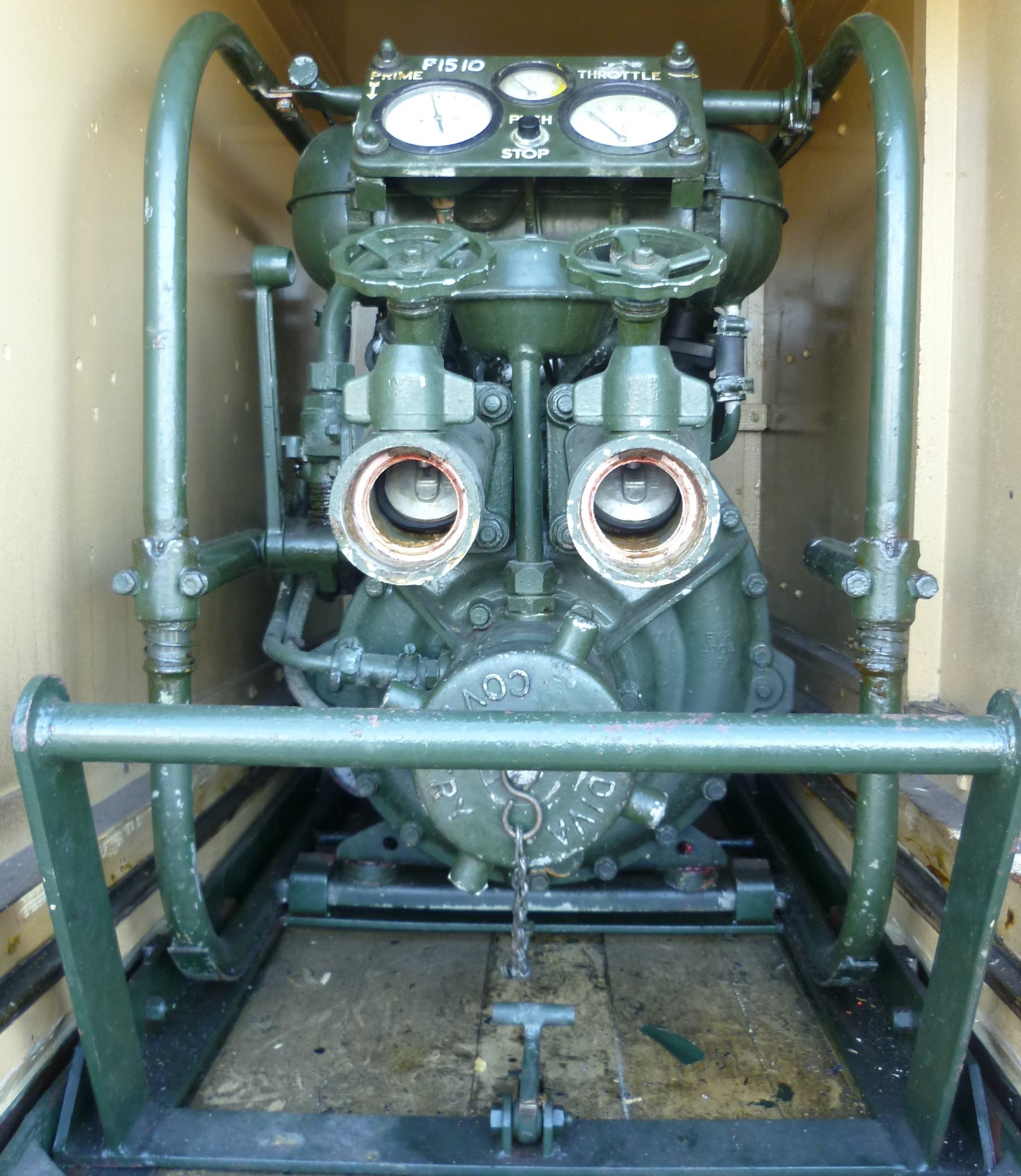 Coventry Climax "Feather Weight" Godiva Fire Pump (Photo: Kim Traynor)
Coventry Climax "Feather Weight" Godiva Fire Pump (Photo: Kim Traynor)
Bouyed by the initial interest in the FW, the company modified the engine which was given the designation, FWA (A for automotive) and Kieft Cars signed on to use the FWA in the 1954 Le Mans 24-hour race. To take advantage of the 1100cc class limit the FW had been bored out to 1097 cc, compression was raised and ports and valves were enlarged; these changes doubled the output to 71 hp at 6000 rpm. At Le Mans, the FWA ran flawlessly until the 11th hour when the Kieft car retired with rear-axle failure. After its racing debut and rising interest in the FWA, the company continued development, lifting the output to 90 hp at 7000 rpm and then 96 hp at 7300 rpm. Also impressive was the cost of the engine with a base price of £250. Kieft, Lotus and Cooper ran the uprated FWA's at Le Mans in 1955 and in the 1956 race, a Lotus 11 Climax FWA achieved a seventh-overall finish and first in its class.
 Kieft 1100 Climax FWA, Le Mans 1954 (Photo Buch-t)
Kieft 1100 Climax FWA, Le Mans 1954 (Photo Buch-t)
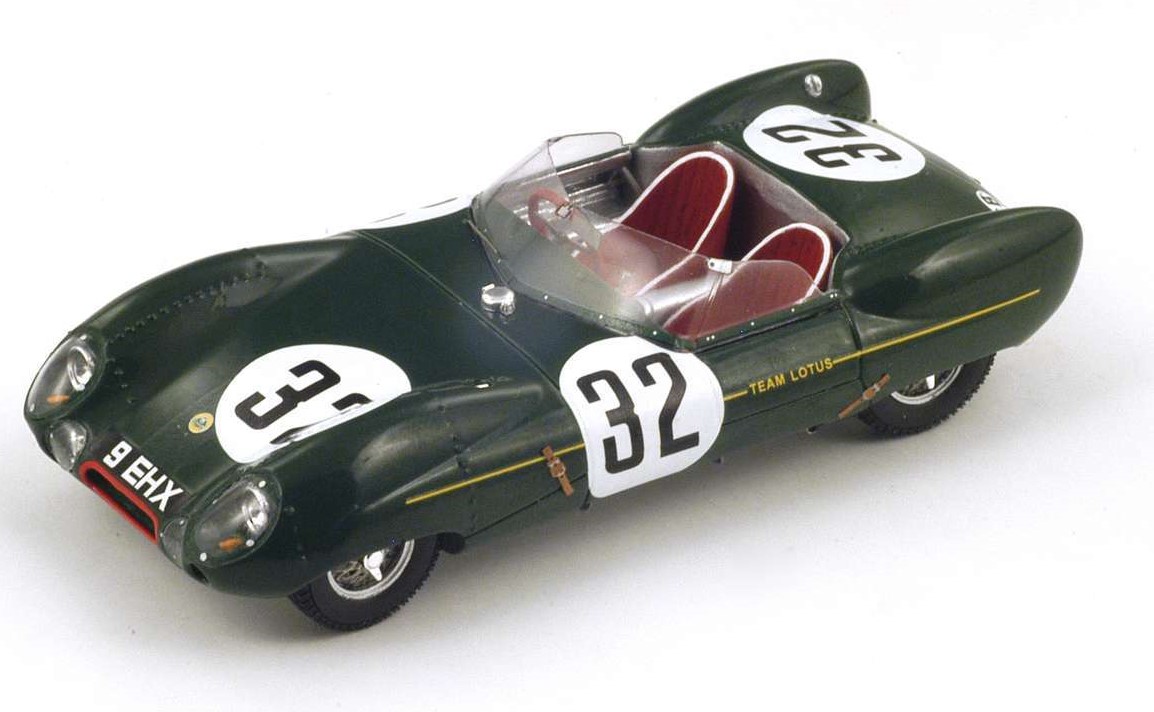 Spark S2183: Lotus 11 Climax FWA Le Mans 1956
Spark S2183: Lotus 11 Climax FWA Le Mans 1956
The FWA was further developed for the new 1500 cc engined Formula 2 class in 1956 and the FWB was born. The displacement was raised to 1460 cc and output to 108 hp. Further iterations of the humble FW were developed; the FWC, FWE and FWG. By 1957, the first Climax engines began to race in Formula One in the back of Cooper cars. Initially the F1 engines were FWBs but the FPF engine followed. In 1959 and 1960, Jack Brabham won the F1 World Championships in Climax-powered Coopers. In 1963 and 1965, Jim Clark took the Championship for Lotus powered by the Climax FWMV. In all, Climax engines won 40 Grand Prix and was the first "customer" engine to be supplied to privateers.
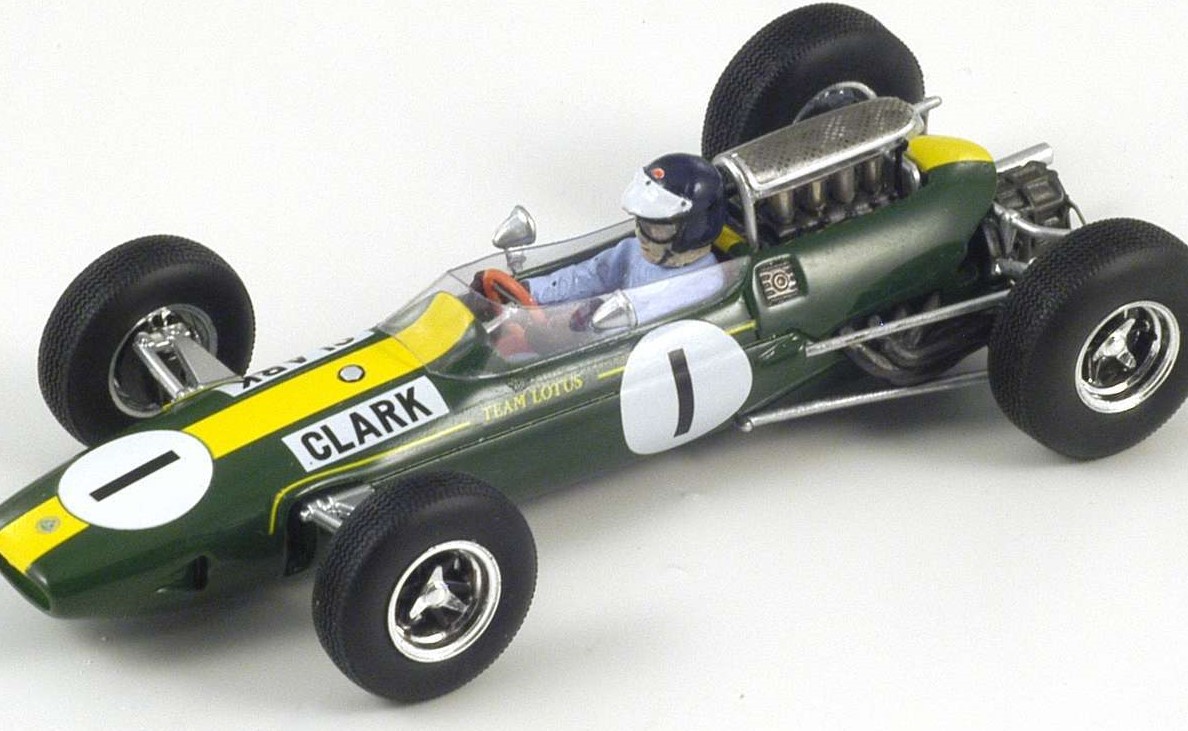 Spark S1614: Lotus 33 Climax 1965 Jim Clark
Spark S1614: Lotus 33 Climax 1965 Jim Clark
Suffering from financial difficulties in the 60's, Coventry Climax was sold to Jaguar in 1963. In turn Jaguar, also suffering financial stress, merged with the British Motor Corporation in 1966 to become British Motor Holdings (BMH). Two years later, BMH and Leyland joined forces to form the British Leyland Motor Corporation. The skeletal remains of Coventry Climax were passed onto a commercial-vehicle group in 1978 which went into receivership in 1986. Today, spare parts and even complete FWA engines are still available from Peacock Engineering to keep the historic racing scene alive.
Update 12 January 2021
The Sydney Model Auto Club, the organisers of the monthly Granville toy fair have officially cancelled the February fair due to the current Covid situation in Sydney.
New Additions: January 2021
Welcome to the January update and I wish a safe and happy new year to everyone around the world. I think most people are just glad 2020 is over and are looking forward to a more sociable year where life can return to some sort of familiarity. Prior to the December covid outbreak in Sydney, the Sydney Model Auto Club was hopeful of a February restart of their model fairs at Granville but we are waiting on a confirmation subject to the ever changing health situation. So, January looks to be another quiet month for collectors. January is also a quiet month for my new additions listing with just a handful of models, so, what are the interesting models on offer?
Harald Ertl was an Austrian driver who had some success racing in Touring Cars and in Formula Two during the early 1970's. By 1975 he had accumulated enough money, helped by sponsorship from Warsteiner (a German Beer company) to enter Formula One in a Hesketh Ford 308. Painted in Warsteiner's golden livery, Ertl debuted in the German Grand Prix held on the 22.8 kilometre Nurburgring circuit where he qualified in 23rd position (out of 25). After 14 laps of racing and the eventual retirement of 14 cars, Ertl finished in 8th position. Ertl then spent the next two seasons driving unsuccessfully for the Hesketh team with a best finish of 7th place.
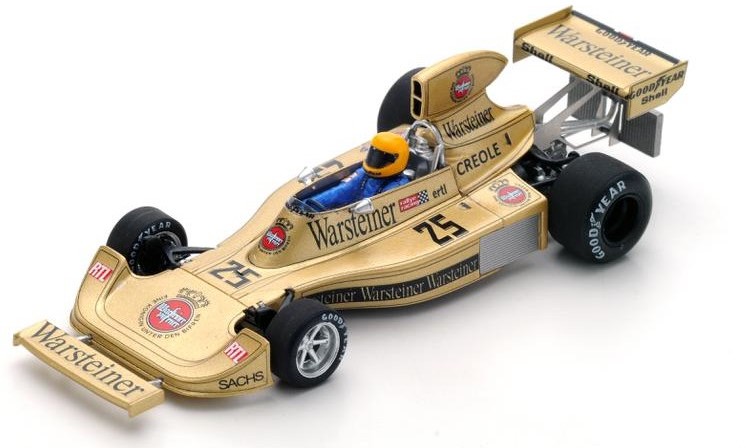 Spark: Hesketh Ford H.Ertl 1975 German GP
Spark: Hesketh Ford H.Ertl 1975 German GP
1970 was going to be Porsche's year at Le Mans having dominated the Sportscar Championship season with its 917. Their main opposition would come from Ferrari with their powerful 512S and eleven Ferraris were pitted against nine Porsche 917's. The three John Wyer "works" Gulf Porsches were eliminated during the race and after 24-hours of racing, the privateer Salzburg Porsche claimed victory. In a great debut for the new Martini Racing team, Larrousse and Kauhsen finished second in the psychedelic Porsche 917 longtail, affectionately called the "Hippie" car. A week before the race, the boss of the Martini team offered his car to Porsche's recently appointed designer, Anatole Lapine, to decorate. Departing from the planned white with Martini-striped livery, Lapine penned the swirling 'hippie' design, laying purple on factory-fresh white Porsche paintwork. After qualifying, the car was further decorated with a touch of matt fluoescent green replacing the white, the task finishing the day before the race; in all, about 1500 spray cans were used. According to the team, when it was finished, nobody could move their index fingers any more! Ferdinand Piech, the father of the 917, apparently was not impressed, saying, "You know, a race car just has to be white".
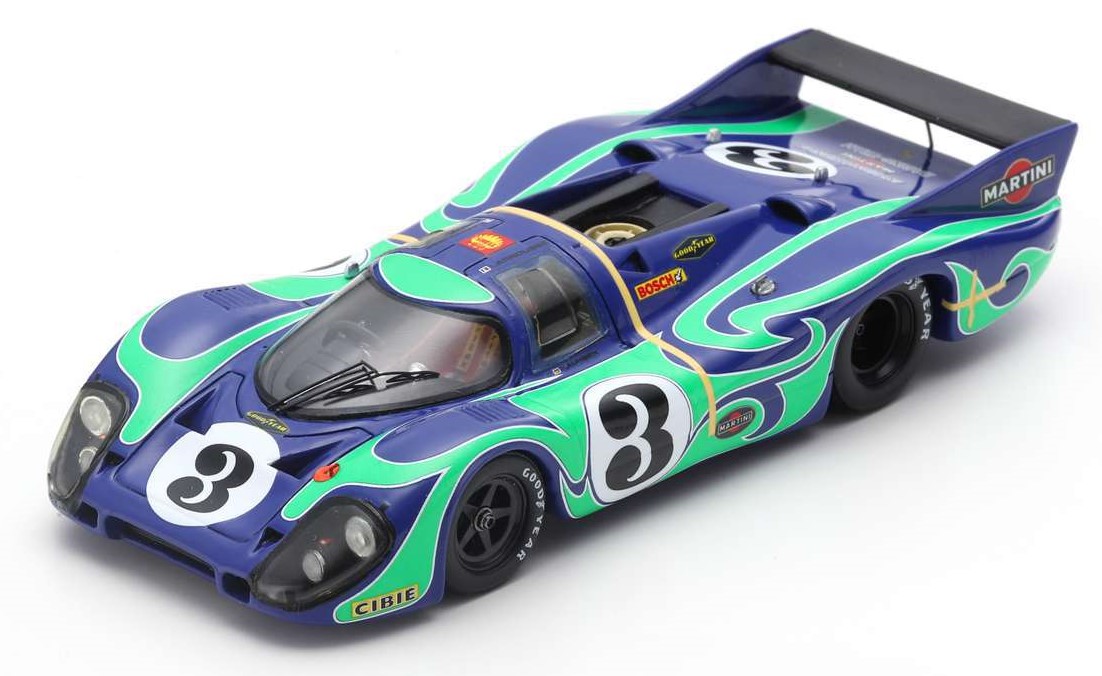 Spark: Porsche 917 "Hippie" car 2nd Le Mans 1970
Spark: Porsche 917 "Hippie" car 2nd Le Mans 1970
Ok, that's it for the first update of the new year. No model fairs in January and understandably, no confirmation yet, of any other events for 2021. Any confirmed dates will be posted here and on my "Swap Meets" page. So, until next month, keep dusting your collection and happy collecting.
Formula One
- 1986 Brabham BMW BT55, D.Warwick (8) Canadian GP "Olivetti" (Spark)
- 1971 BRM P160, H.Ganley (16) 4th US GP "Yardley" (Spark)
- 1978 Ensign Ford N177, D.Daly (22) British GP (Spark)
- 1980 Ensign Ford N180, C.Regazzoni (14) Brazilian GP (Spark)
- 1975 Hesketh Ford 308, H.Ertl (25) 8th German GP (Spark)
- 1978 Lotus Ford 78, H.Rebaque (25) 6th German GP (Spark)
- 1984 McLaren TAG MP4/2, N.Lauda (8) 1st British GP (Spark)
Le Mans / DTM
- 1993 Audi 80 Quattro 2.5, F.Biela (44) DTM Prototype (never raced) (Spark)
- 1970 Chevrolet Corvette, Greder/Rouget (2) Le Mans (Spark)
- 1970 Porsche 917L, Larousse/Kauhsen (3) 2nd Le Mans (Spark)
- 1985 Porsche 962C, Holbert/Watson/Schuppan (3) Le Mans (Spark)
American Race Series
- 1975 BMW 3.0 CSL, Redman/Moffat/Posey/Stuck (25) 1st Sebring 12h (Spark - restock)
Helmet
- 2019 Lando Norris - McLaren F1 helmet 1:5 (Spark)
After Thoughts: "A New Year and New Era for Le Mans Cars." With the start of a new year, it's an opportune time to review the changes to the FIA World Endurance Championship for 2021. The current form of this championship is now in its ninth season and was open to prototype and grand-tourer style racing cars divided into four classes. The 2021 Championship is set to see a significant change to the top class of competition with the LMP1 Prototypes being phased out to be replaced by two new classes called "Le Mans Hypercars (LMh)" and "Le Mans Daytona Hypercars (LMDh)". The current LMP2 class will continue until the end of 2022 but with reduced power.
 No more LMP1, goodbye Toyota TS050 (Photo: D.Merrett)
No more LMP1, goodbye Toyota TS050 (Photo: D.Merrett)
Following the exit of Audi and Porsche from LMP1 class over the last few years, the FIA began the process of developing the next generation LMP1 rules with the aim of reducing the spiralling costs and LMh was created. But early in 2020, IMSA (who oversees the US Championship) and the ACO (who oversees the World Endurance Championship) released rules for the LMDh class that would replace the US Daytona Prototypes (DPi) and enable manufacturers to run the same car in North America and Europe. The draft rules would allow LMh cars to run with LMDh cars by lowering the Hypercar power and weight limits to those of LMDh.
With the LMh category, manufacturers will be free to build and race custom designed cars without homologation or use cars based on existing road-going models subject to a homologation requirement of at least 20 road-legal cars being built over a 2-year period. However, the LMDh cars will run on next-gen, spec LMP2 chassis built by four companies, Dallara, Ligier, Multimatic and Oreca. Car makers can then fit their own engines and style their own bodywork to a comprehensive set of aerodynamic regulations. To cut costs, the LMDh cars will use a specified hybrid system that produces 50kw which is a major divergence from LMh cars which are allowed to run entirely custom-designed powertrain systems and a hybrid system up to 200kw. LMh cars are scheduled to start racing in 2021 while the LMDh is slated for a 2022 start at the Daytona Rolex 24 hour. A "Balance of Performance" process will be introduced when the two classes race together in 2022 to ensure close racing.
As of September 2020, Toyota, ByKolles and Glickenhaus have confirmed they will compete in the Hypercar class (LMh) with Peugeot set to join the grid from 2022. Meanwhile, McLaren have shelved plans for a LMh car and are considering a return to sports car racing with an LMDh car. Other manufacturers who may also be interested in LMDh include Porsche, Audi, Alpine, Hyundai and Lamborghini while current DPi manufacturers, GM, Mazda, Lexus, Honda/Acura are also interested.
 Toyota GR Super Sport LMh Hypercar (Photo: Tokumeigakarinoaoshima)
Toyota GR Super Sport LMh Hypercar (Photo: Tokumeigakarinoaoshima)
